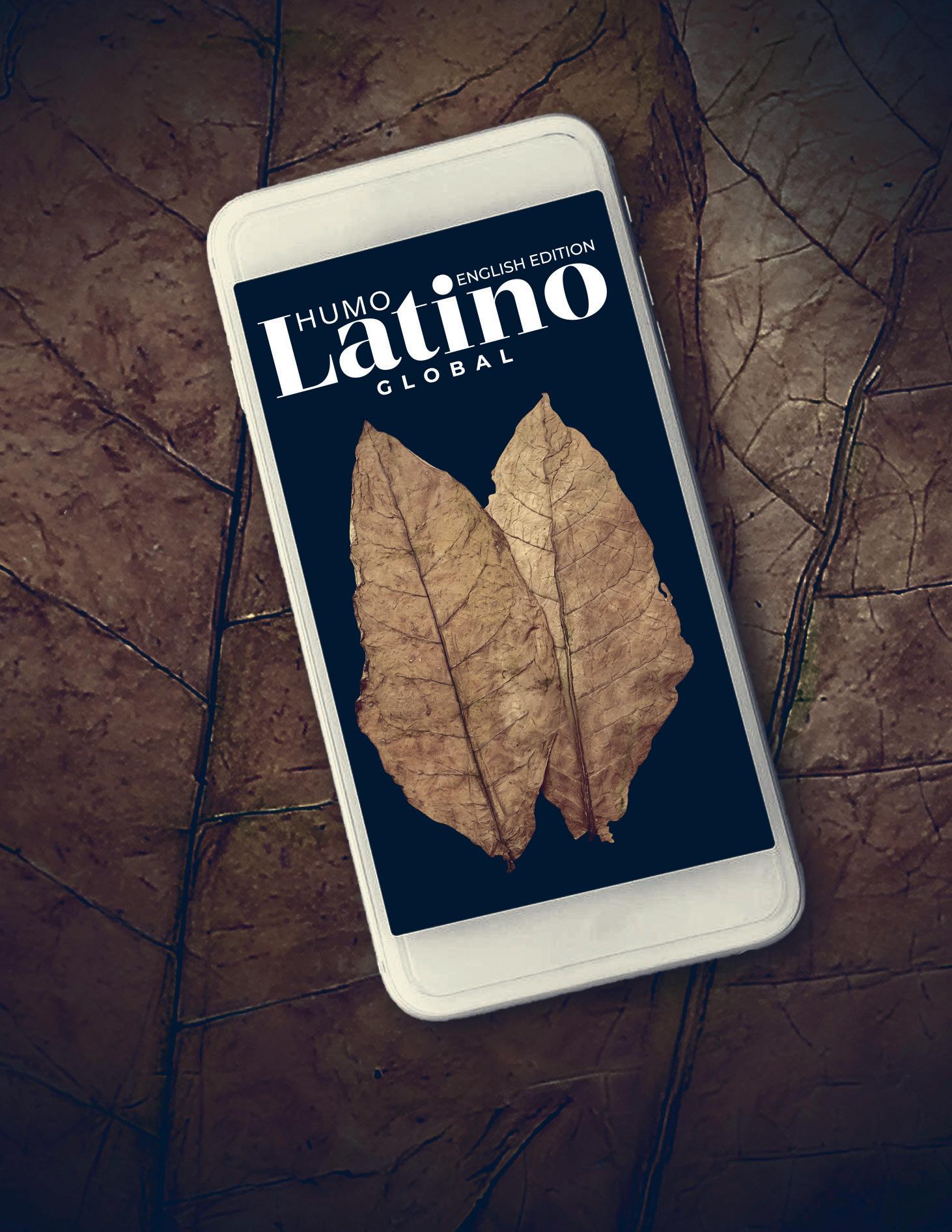SPECIAL FEATURE
Wood and Waters
Innovation for Pleasure
SMOKE COLUMNS
Freedom and Ironies of Pleasure in the United States
SPIRITS LOVERS
Chivas Regal 12 Year Old Smooth and Fruity

Wood and Waters
Innovation for Pleasure
SMOKE COLUMNS
Freedom and Ironies of Pleasure in the United States
Chivas Regal 12 Year Old Smooth and Fruity
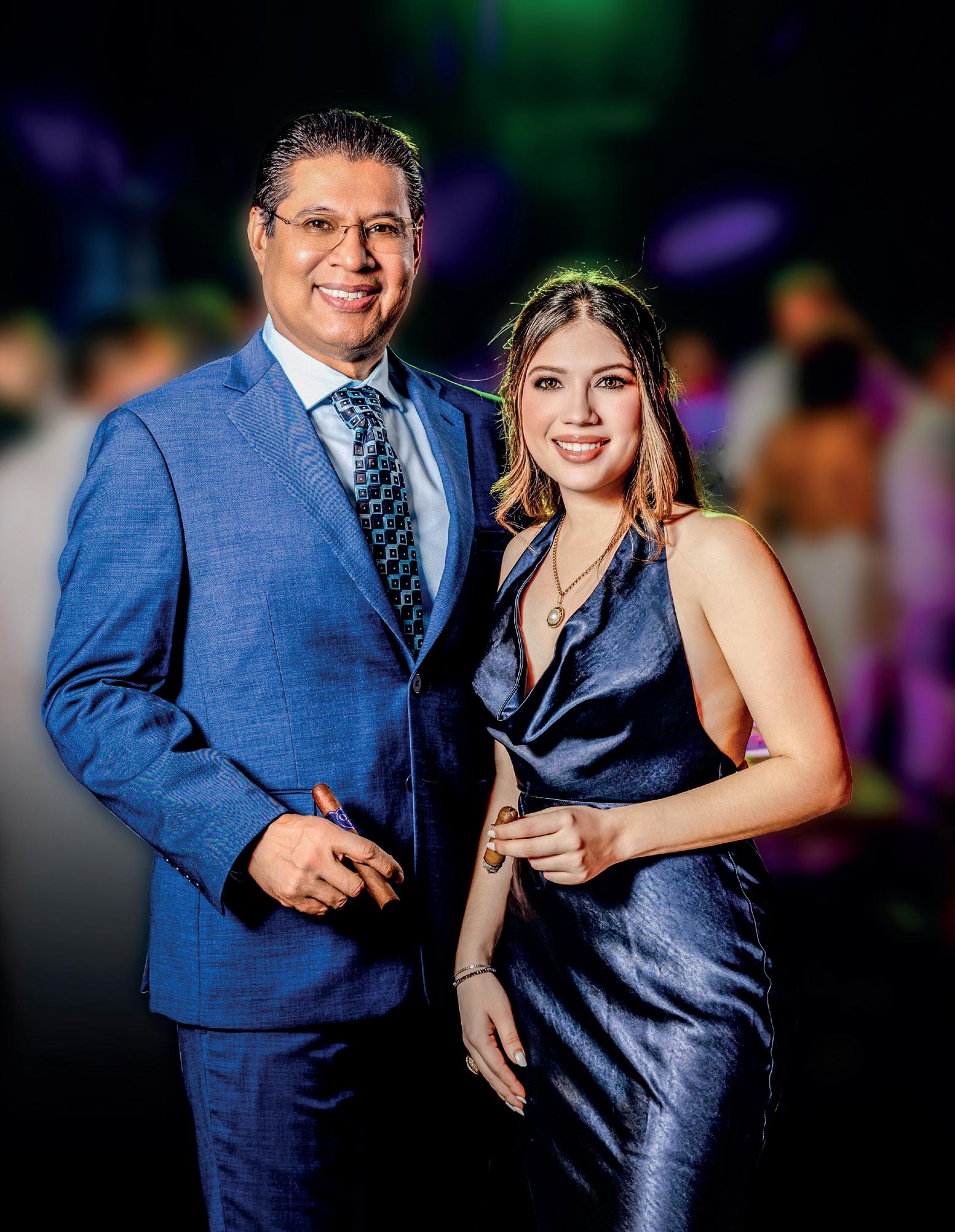


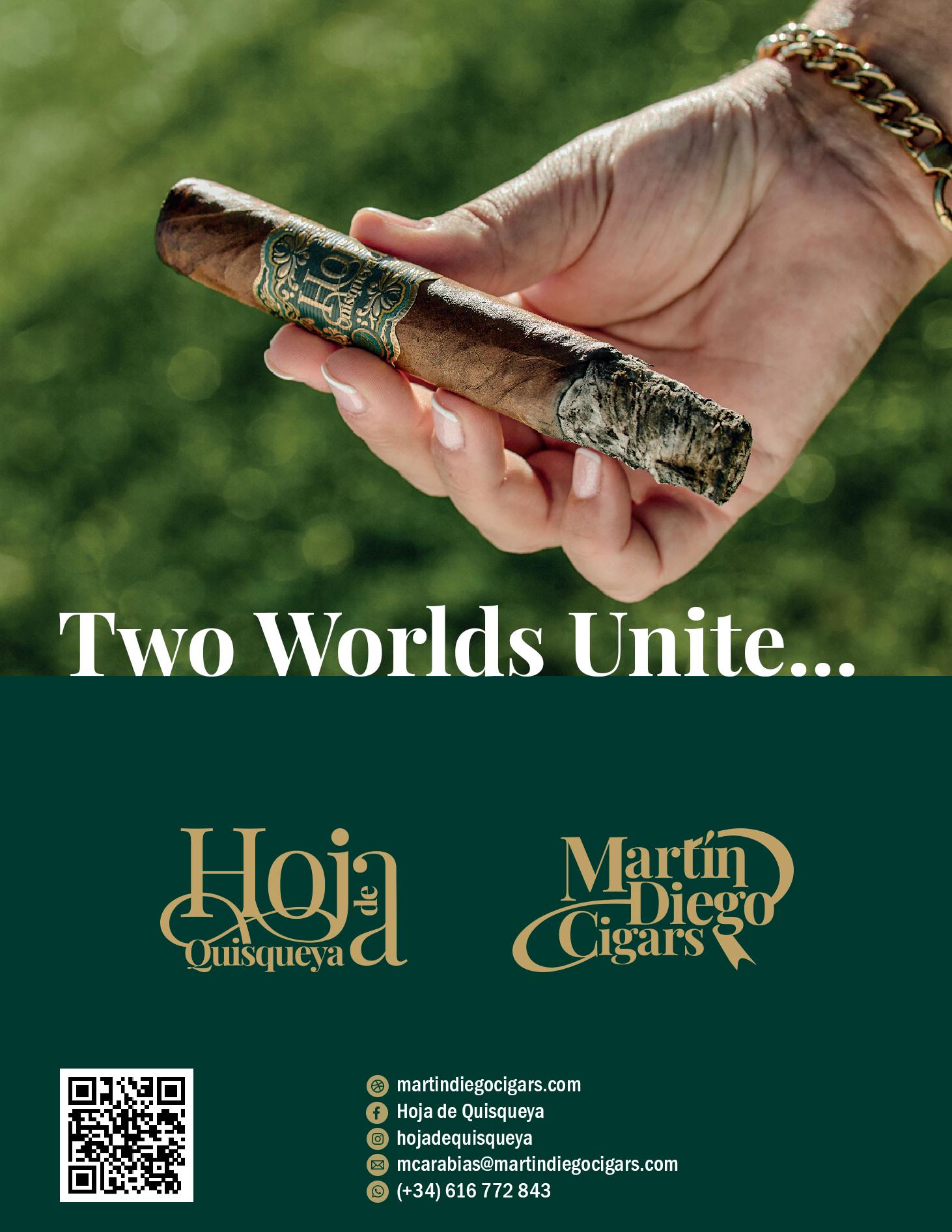


Aniversario Edition
First Rum with a Designation of Origin

What began 50 years ago as a hobby for Francisco, Don Chico Barreda, a visionary man who discovered the pleasure of smoking with the first Cubans to arrive in Nicaragua, is today a family legacy spanning four generations of passion and dedication to tobacco.
César Salinas Chávez
Director
Alberto Arizmendi
Editorial Director
Dominican Republic
Julio César Fuentes
Commercial Director
Honduras
Patricia Pineda
Rolando Soto
Roberto Pérez Santiago
Art Director
Raúl Melo
Publisher
Enrique Quijano
Style Correction
Moisés Licea
Web Master
Yoshua Segovia
Community Manager
Argentina
Gastón Banegas
Canada
Nicolás Valenzuela Voss
Chile
Francisco Reusser
Christopher Sáez
Michel Iván Texier Verdugo
Colombia
Federico Londoño Mesa
Eduardo Márquez
Cuba
José Camilo López Valls
Humo Latino Magazine reserves the right to reject unsolicited articles that contravene its thematic profile, as well as those that do not conform to its style standards.
The articles received will be approved in the first instance by members of the Editorial Board. We reserve the right to make changes or introduce modifications to the manuscripts, for the sake
© All Rights Reserved. Grupo Humo Latino Any reproduction, total or partial, of this contents, by any process, is prohibited.
global.humolatino.com issuu.com/humolatino
Dominican Republic
Francisco Matos Mancebo
Wendell Rodríguez
Mexico
Aurelio Contreras
Gonzalo Romero
Manolo Santiago
Puerto Rico
Cándido Alfonso
José Luis Acosta
Spain
Luciano Quadrini
Sofía Ruiz
José Antonio Ruiz Tierraseca
Fernando Sanfiel
United States
Anastasia Psomiadi
Blanca Suárez
Francisco Arias
Lefty Karropoulos
Yesi Rose
Venezuela
José Bello
Diego Urdaneta
of better reading comprehension, without this implying changing their content.
The authors are responsible for the content published under their signature. Humo Latino Magazine does not assume any responsibility for possible conflicts arising from the authorship of the works and publication of the graphic material that accompanies them.
@humolatinoglobal info@humolatino.com
For the past month, the U.S. Government has been analyzing the possibility of imposing “additional tariffs of up to 100 percent on some or all Nicaraguan products,” either “immediately or in phases, over a period of up to 12 months.” Should the proposal, put forward by the Office of the United States Trade Representative (USTR), be implemented, it would reconfigure the premium cigar market in the U.S., which is the largest market in the world.
Why? The reason is simple: in 2024, the United States imported 430 million premium cigars, of which almost 60 percent came from Nicaragua. This means that six out of every ten cigars smoked in North America are Nicaraguan, and the impending measure would mean a severe blow not only to the Central American country but also to the internal U.S. market, at least in terms of its logic or operation in the short term.
The tariffs would mean, for example, that a Nicaraguan cigar that a smoker currently buys for, say, $12, would suddenly double in price, losing competitiveness and, consequently, sales.
For now, producers are preparing. We have spoken with several friends and clients who comment that they are currently increasing their production and exporting the largest possible quantity of cigars and tobacco to their warehouses, seeking to have maximum product inventory ahead of the possible entry into force of the measure, or even the possible expulsion of Nicaragua from the Central America Free Trade Agreement (CAFTA).
But where there is uncertainty, there is also opportunity. The global premium cigar market is currently moving in ways that have not yet fully consolidated. Suffice it to mention the opening of the Asian region, which is gaining more relevance day by day, as well as the entry onto the scene of markets such as the Arab world, which this month celebrates the second edition of The World Cigar Show in Dubai, or even Africa, as an option.
There is also Latin America, which is gaining increasing relevance with countries experiencing a rise in consumption, such as Colombia, Venezuela, Chile, Argentina, and Brazil; destinations increasingly considered by different brands.
Of course, these are alternatives that involve long-term investments and practically represent a bet that not many are willing to make when faced with a consolidated market like the United States. Nothing has been decided yet, but the shadow of the threat looms over the leading premium cigar producing country.
In contrast, the measure would open the doors for producers in the Dominican Republic and Honduras to increase their exports to the U.S., which could lead to companies based in Nicaragua deciding to move their operations to those countries, for example.
The coin is now up in the air.



Driven by a reorganization and with the goal of positioning Mexican tobacco where it deserves to be, Casa Turrent, hand in hand with Entre Humos, arrives in Puerto Rico to satisfy the needs of a growing market that demands quality products, backed by an indisputable family legacy.
According to Celina Turrent, a member of Grupo Turrent, they are currently experiencing a process of growth that, based on a redefinition of strategies, is beginning to bear fruit. Proof of this is the distinction received from Cigar Journal, through the Best Value Other Countries award; a recognition of the high quality of their products, celebrated during the InterTabac 2025 trade fair.
Regarding this alliance, Cándido Alfonso, founder of Entre Humos, explained that beyond being a distributor, his company has become part of the Casa Turrent reorganization process. “People here are surprised to learn that a Mexican premium cigar exists, and I tell them that it doesn’t just exist... it has existed for decades, through a company that is the largest supplier of San Andrés leaf on the market.”
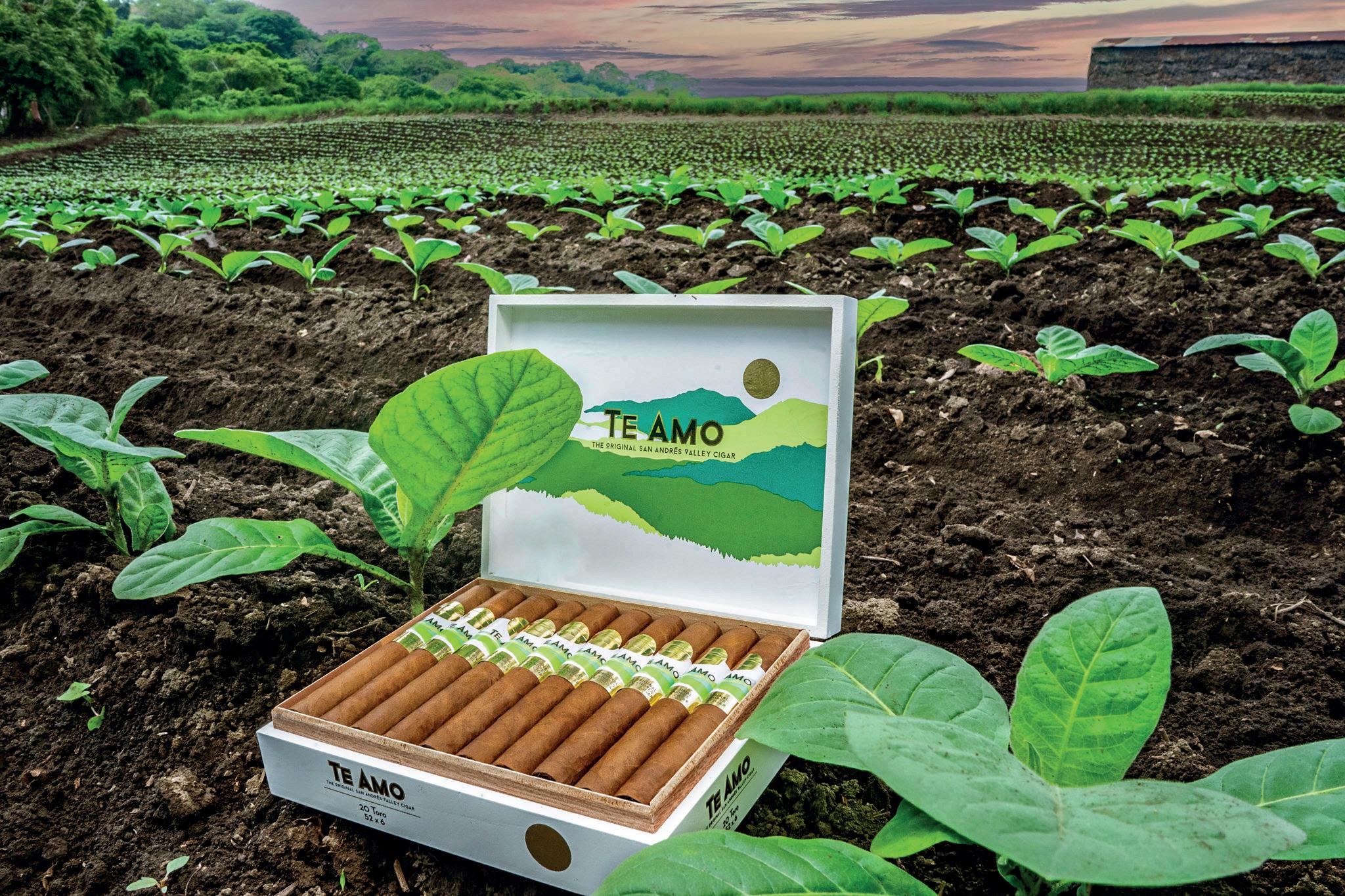

Cándido defines himself as an entrepreneur who likes to work with brands that have a legacy, which is why the incorporation of Casa Turrent into his catalog was non-negotiable. “Ricardo Carioni and I are very good friends, and we had already worked on the exclusivity of The Cigar Academy in Puerto Rico. When he joined Casa Turrent, we didn’t hesitate to start the same process for all their lines.”
Celina Turrent received the Cigar Journal award during the InterTabac 2025 celebration.

With its three vitolas –Robusto, Magnum, and Toro –the Redescubre Te Amo rebranding pays homage to the oldest Mexican cigar on the market, and with it, to the San Andrés valley in Veracruz, Mexico.
“Entre Humos has always sought to keep up with market trends, bringing in new brands so that consumers can increasingly get to know the wide spectrum of options that make up the market. The Casa Turrent catalog is an excellent example of what we can bring to Puerto Rico.”




Sofia Ruiz Master Habanosommelier
Death... a word that, when written or pronounced, sounds as hard and rough as unsanded wood. Yet, at the same time, it could be synonymous with reunion or culmination. In the Mexican context –my culture and roots– it signifies a time for reunions through memory, through actions taken on earth, and a way of experiencing this passage to the underworld. That is to say, what can be understood as a next reincarnation, the smoke of the future, or the roots of a cempasúchil (marigold) flower.
How much color can we give to life and our time on this earth? Each of us holds that power, and in the altar de muertos (altar of the dead) that we typically set up at the beginning of November, Mexico reflects the love and magnitude of honoring our loved ones. We await the visit of our deceased relatives and friends –in spirit– and from the very first minute of that day, we are filled with the feeling of knowing they are with us.
Every November, we revive one of the most important and magical traditions of our culture: the Día de Muertos (Day of the Dead). This is because we have been taught never to forget the departed, who live on through memories.

I write these lines thinking of those who accompanied me every step of the way, and whom I am sure I will find again. Especially my godfather Saúl, who left us a few weeks ago, whom I remember always talking about sports and laughing at the jokes of Mi Sofi, as he used to call me.
Pre-Hispanic cultures shared the belief that the entity or spirit that grants consciousness to the human being, upon transcending this plane, would continue its journey in the world of the dead, where it still requires elements that were part of its daily life, including food.
Among the Aztecs, for example, the bodies of the deceased were prepared, dressed, and adorned, and the festivities included offerings of personal objects and food for the soul to travel to the Mictlán (underworld). After the arrival of the Spanish, the tradition was syncretized, and according to the Catholic calendar, November 1st was designated as Todos los Santos/All Saints’ Day (children and beatified), and November 2nd as Day of the Dead (adults).
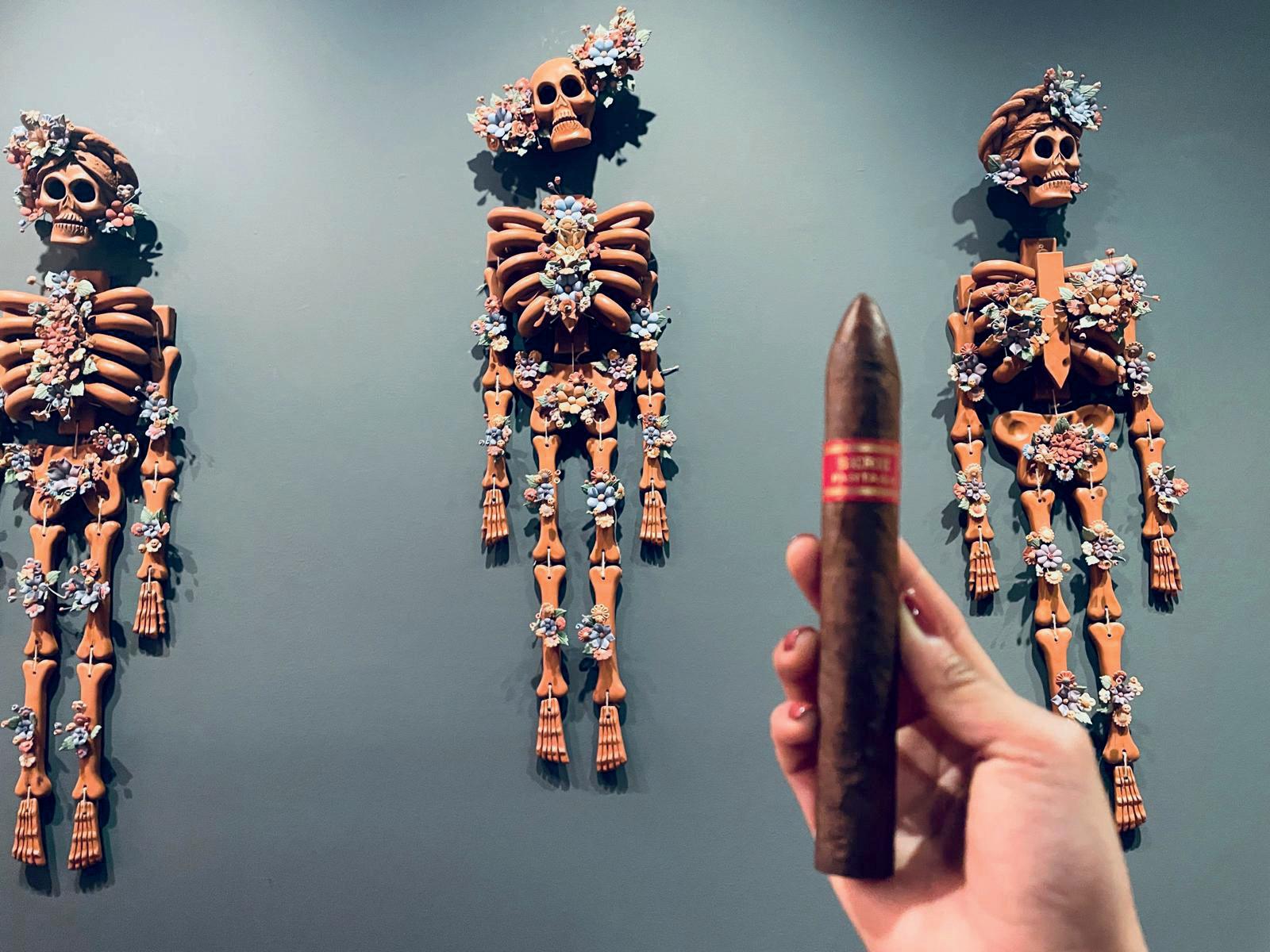

We celebrate it in different ways: from holding vigils in the cemetery to visit and clean the tombs of our departed, to eating the famous pan de muerto (bread of the dead). And from my perspective, the most important element is the setting up of an altar. The mere act of placing and adorning it is a ritual born from the heart; a path of tears transformed into cempasúchil petals that blend anecdotes and hope.
I decided then to take a Madrid morning to connect with my origins, as the Casa de México Foundation in Spain annually erects an altar with a theme representative of the country. This year’s theme is Cabaret El Recuerdo (The Memory Cabaret): “Life, like the best of cabarets, must be lived by singing, dancing, and loving until the end.” I would add: with everything that fills our soul, including good smoke.
The foundation building’s display windows feature spectacular, life-size Catrinas (elegant skeleton figures), fitting the ambiance of a cabaret –social interaction spaces that combined dance, music, and comedy, experiencing their glory days during the last century– full of color and joy. The joy of our loved ones visiting us!
Once inside, six illuminated Catrinas are observed in the foreground, decorated with neon and glitter, amid papel picado (perforated paper) decorations and large spheres. The essential bottles of tequila also appear, along with a Tzompantli (skull rack) that recalls the Mexicas’ reverence for Huitzilopochtli, god of the sun and war, as well as the patron of México-Tenochtitlan.

Elements that can be found on an altar de muertos include:
Copal: An aromatic resin that represents the purification of the soul. Its scent guides the departed to their offering.
Candles: They are the fire that illuminates the round-trip path.
Papel Picado: Represents the air and the joy of the festivity. When it moves, it signals that the souls are arriving to enjoy their offering.
Water: Represents the purity of the soul, needed to quench the visitor’s thirst.
Pan de Muerto: Symbolizes the Christian Eucharist, but the top features shapes that resemble bones.
Salt Cross: For Mesoamericans, it marks the four cardinal points and is placed to orient the deceased, while for Catholics, it recalls the resurrection.
Photographs: They commemorate the deceased to whom the altar is dedicated.
Catrinas and Calacas (Skeletons): The Catrina skull derives from the character created by artist José Guadalupe Posada as part of his social critique of the bourgeoisie of the time.
Flor de Cempasúchil (Marigold): The flower of the dead that the Mexicas compared to the sun because of its intense yellow or orange color. Thanks to this and its aroma, souls can reach the altar and enjoy the feast.

In the foundation’s hallways, handicrafts inspired by the Catrinas are exhibited, and on the first floor, the ceiling of a room is covered in papel picado. How can we give death so much color? I thought. Perhaps because in it we see all the shades we have put into our lives.
So, to celebrate the occasion, that afternoon I lit a Partagás Serie P No. 2, a figurado-format habano that has become traditional among aficionados. We are talking about a brand that has created rituals in the culture of fine smoke for over a century. Its emblematic red color, imprinted on its band and logo, has left a mark on those of us who have enjoyed its aromas, flavors, and strength, leaving a lasting aftertaste altar on the palate.

Another pair of life-size Catrinas, made from jute fiber, are surrounded by nopal (prickly pear cactus) pads, which refer to Mexican gastronomy. They are the preamble to a long corridor with a wall full of skulls and other crafts made of clay, metal, sugar, cardboard, and paint on tile.
Finally, I entered a room where a gigantic card from the lotería game is displayed across an entire wall (the game consists of being the first to fill the spaces on the card or board, with images from Mexican culture, according to the corresponding cards called out from the deck). There, the Casa de México invites visitors to leave a memory; a moment that generated mixed feelings in me: happiness and nostalgia.
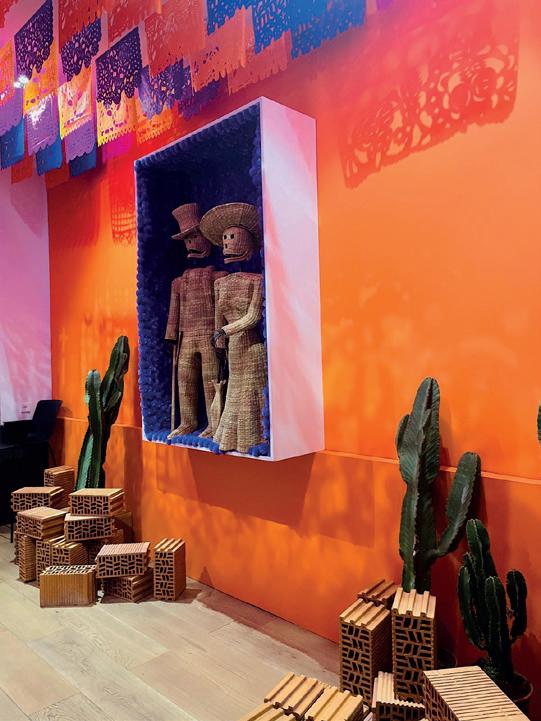
It was a day to immerse myself in Mexico, my homeland, and in my inner self... An entire day that I concluded by joining the tribute with a galera habano, a pirámide 52 x 156 mm, and a caballito (small glass) of tequila. With every third, I honored the journey of my people and the time life allowed me to spend with them, as we reunite to continue advancing together. It was like lighting up the laughter and the memories.

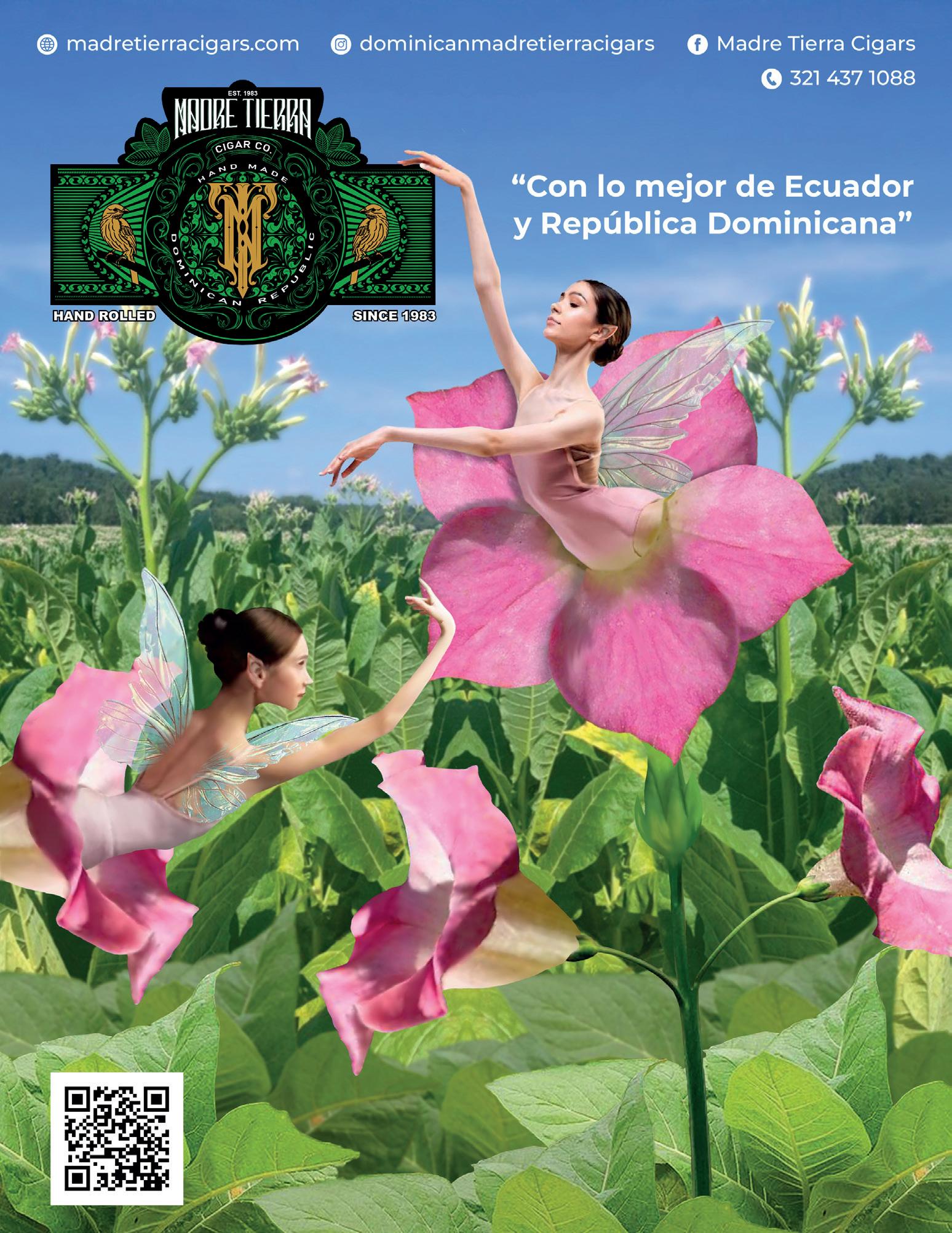



New arrivals, favorites, and classics.
(*) In alphabetical order.

Friend’s Cigars, Actitud
Wrapper: Cuba (seed).
Binder: Cuba (seed).
Filler: Dominican and Pennsylvania.
Size: Toro, 5.75 x 50.

Guillén & Co. Premium Cigars, El Legado
Wrapper: Honduras Corojo.
Binder: Nicaragua Jalapa.
Filler: Honduras and Nicaragua.
Size: Toro, 6 x 52.

Hoja de Quisqueya, Serie 2 Robusto
Wrapper: Habano 2000.
Binder: HVA.
Filler: Quin Díaz, Criollo '98 and Piloto Cubano.
Size: Robusto, 5 x 52.

Indian Head, Rough Rider Sweets
Wrapper: Ecuador Connecticut.
Binder: Dominicana.
Filler: Dominicana.
Size: Churchill, 7 x 50.

Kinship, Dando la Mano
Wrapper: Dominicana.
Binder: Undisclosed.
Filler: Dominicana.
Size: Toro, 6 x 52.

PDR, El Vinyet
Wrapper: Colorado Claro.
Binder: Dominicana.
Filler: United States and Dominicana.
Size: Robusto, 5 x 52.

René Cigars, Julio V
Wrapper: México San Andrés.
Binder: Olor Dominicano.
Filler: Criollo '95, Viso, Pennsylvania and Ligero.
Size: Toro, 6 x 54.

San Pedrito, Candela
Wrapper: Candela Ecuador.
Binder: Nicaragua.
Filler: Ecuador and Nicaragua.
Size: Toro, 6 x 50.

Tabacalera R. Paxtián, Catrinas
Wrapper: Negro San Andrés México.
Binder: México.
Filler: México.
Size: Torpedo, 6 x 54.

Valdespina, Don Fafán Gran Toro
Wrapper: México San Andrés.
Binder: Dominicana.
Filler: Dominicana.
Size: Gran Toro, 6 x 60.




Yesi Rose
This will be my space, and yours too... A corner where we can share notes, travel through time, learn, and explore our palate together. We will discover which spirit we are most passionate about, which ones we still haven’t dared to try, and which ones have undoubtedly given us unforgettable moments, turning them into our favorites.
My name is Yesi Rose, and I invite you to join me on this journey through the universe of spirits: tequila, vodka, gin, bourbon, whiskey, and whisky; each with its own character, history, and liquid soul.
It’s no secret that I am passionate about spirits. It all began in my homeland, Venezuela, with a simple blended whisky. I perfectly remember the first sip: Chivas Regal 12 Year Old, served on the rocks.
I let the ice melt a little longer to soften its strength and make it easier to drink, as at that time I was a complete amateur who knew nothing about spirits and their nuances or aromas. But over time, that initial curiosity transformed into a passion that continues to grow.
Today, more than just a drink, whisky and spirits in general represent for me a way to connect with history, culture, and the people who share a sip to celebrate life.
Every cask holds a legend, and every brand has its origin, its climate, its wood, and its soul. Some spirits are accessible, companions for everyday after-dinner conversations; others are jewels reserved for special occasions, those moments when we raise a glass with those we love most.
That’s how my story began: with a first sip that opened a path of sensory and emotional discovery.
I invite you to talk about spirits, their characteristics, their stories, and their emotions. Because every drink has something to tell... and here, together, we will learn to listen to it.
The legacy of brothers James and John Chivas began in 1801 when they opened a luxury grocery store in Aberdeen, Scotland. Among fine products, wines, and spirits, customers began asking for something special: a smoother, more balanced whisky.
Thus the idea of blending different malts and grains was born, seeking a harmonious flavor. Without knowing it, the Chivas brothers were creating a new category: the Blended Scotch Whisky.


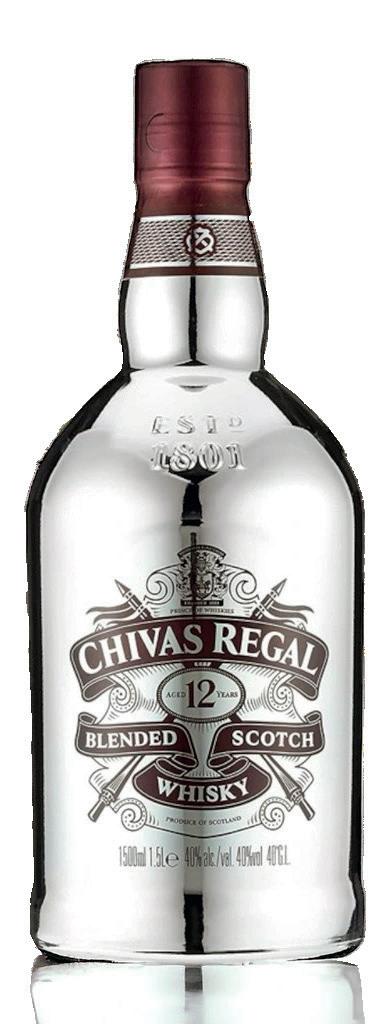
In 1843, Queen Victoria granted them a Royal Warrant, a royal distinction that authorized the Chivas brothers to supply whisky to the British court. Since then, the word Regal became a symbol of their brand. The heart of Chivas Regal is Strathisla, one of the oldest Highlands distilleries, founded in 1786.
Every bottle is the result of a blend of whiskies aged at least 12 years, although some versions reach 18 or 25 years, achieving a balance between vanilla, honey, dried fruits, and a slight touch of smoke; sweet and fruity notes that give Chivas its characteristic smoothness.
Its aroma is sweet and enveloping, with notes of honey, apple, and toasted hazelnut. On the palate it feels creamy, lightly spiced, with a smooth finish that invites the next sip. It is ideal to enjoy on the rocks or in a short glass, allowing the ice to slowly release its nuances.
Chivas Regal is not just a whisky, but a bottled history. A classic that has managed to remain elegant throughout the centuries without losing its essence: a perfect harmony between tradition and smoothness.
Your opinion counts. What whisky should we discover together? Send your suggestion to the emails info@ humolatino.com or yesirethz@gmail.com.


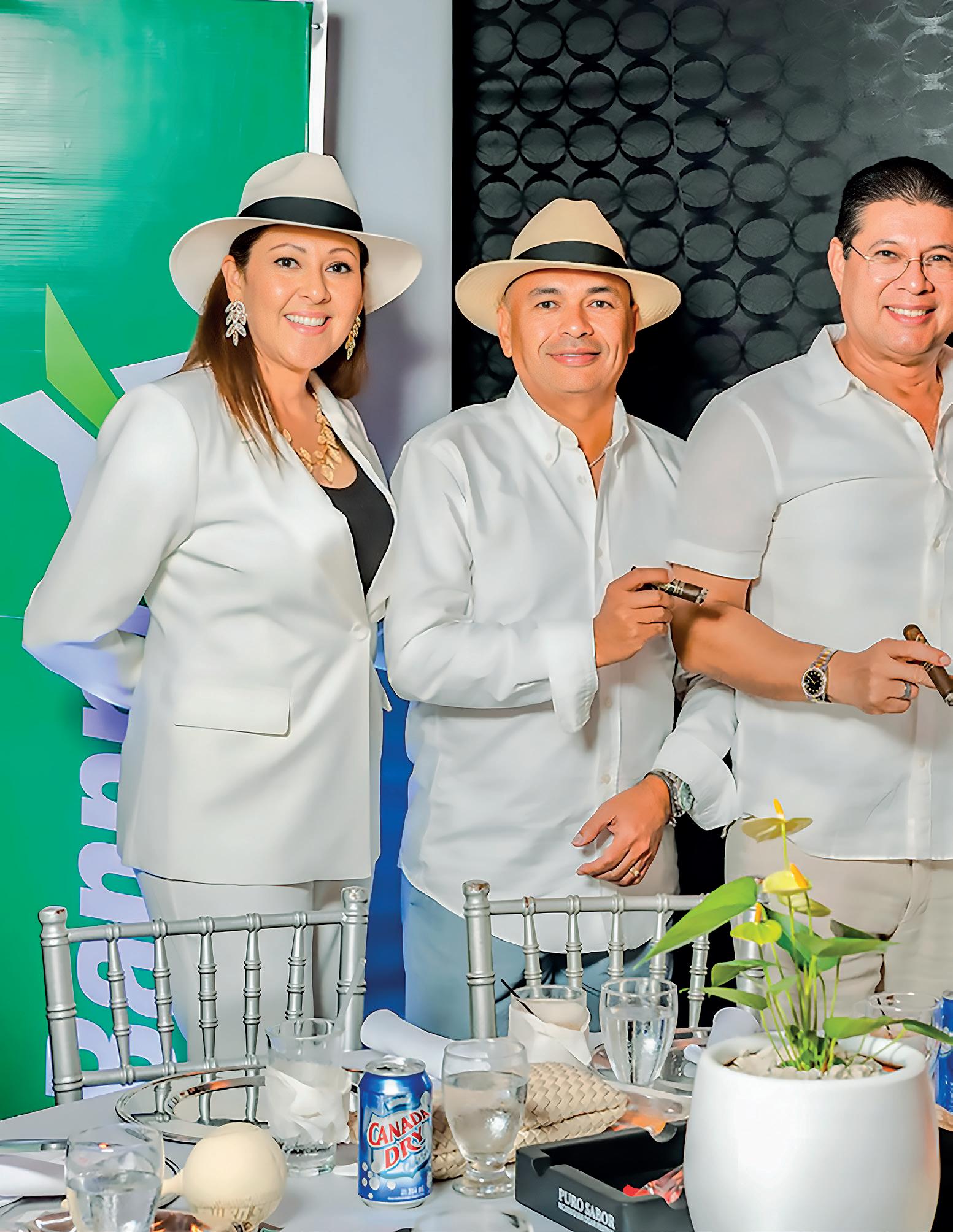
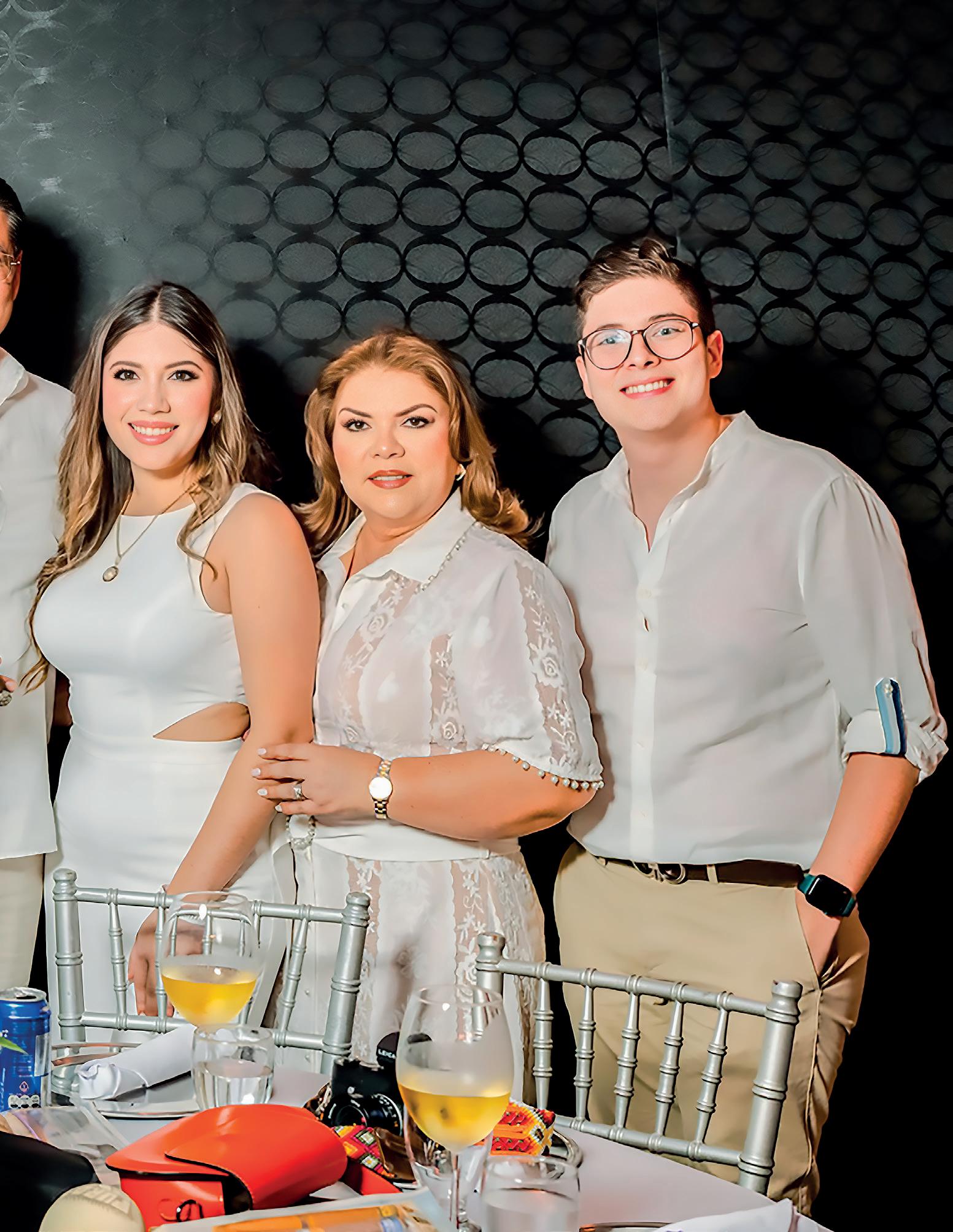
Raúl Melo
What began 50 years ago as a hobby for Francisco, Don Chico Barreda, a visionary man who discovered the pleasure of smoking with the first Cubans to arrive in Nicaragua, is today a family legacy spanning four generations of passion and dedication to tobacco.
Based on the technique of trial and error, Don Chico began cultivating tobacco, refining his artisan method and marking the first step for a surname that now resonates in the premium industry under the guidance of Don Óscar Barreda, founder of Barreda Cigars; a one hundred percent Nicaraguan company that not only elevates the country’s tradition but also positions itself globally thanks to its commitment to quality.
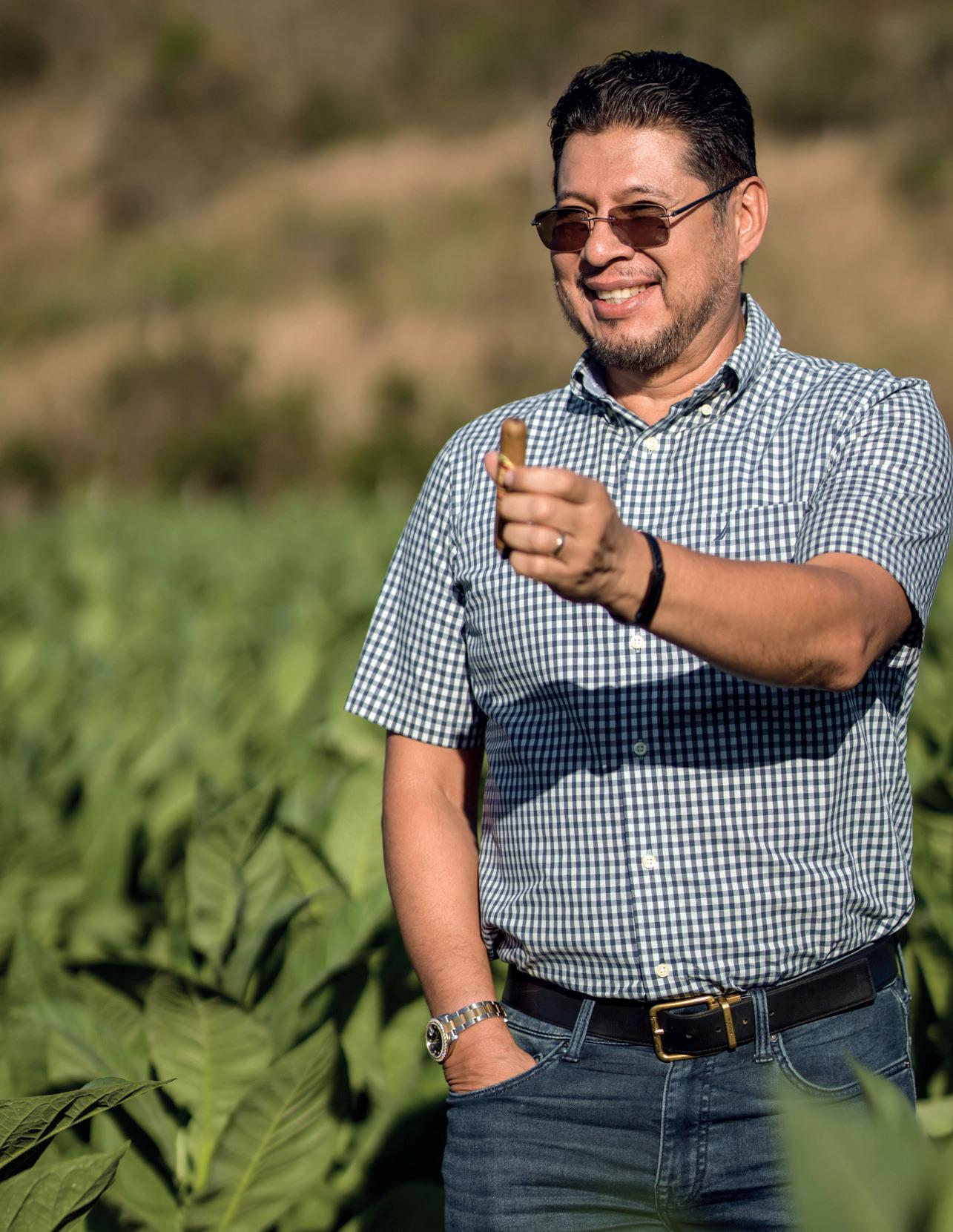
Mr. Óscar Barreda.

Francisco Barreda, Don Chico, was a native of Estelí and throughout his life was involved in the development of various agricultural projects, while also maintaining businesses in food distribution and transportation.
During the 70s, being a sociable and easily likable person, he formed a great friendship with a group of Cubans who had arrived in Nicaragua. They transmitted to him the taste and pleasure of smoking, in addition to the desire to plant tobacco, which he finally did on a small plot of land in the north of the country.
“He was a visionary; he wanted to learn and decided to run tests and start planting, but not as a business. He knew that part of his family name’s future was in tobacco, so he also learned to make his own blends and roll his cigars, which were very artisanal, and he loved smoking them,” recalls Don Óscar, his grandson.
This family business, in which his wife, Doña Karla Rodríguez, participates as general manager, and his children, Jennifer and Óscar, are in charge of marketing and image, and production processes, respectively, uses the techniques developed by Don Chico, who started with the sale of raw tobacco leaf; a business model they maintain, along with the cigar manufacturing.

Don Óscar Barreda studied Electrical Engineering and founded the company Barreda Constructora Eléctrica, a successful business that came to cover 60 percent of the national territory, securing contracts from state-owned companies for 18 consecutive years.
Although disconnected from tobacco as an economic activity, he continued learning from his grandfather, Don Chico, who taught him about the land, planting, processes, and tobacco blends;
a closeness that also provided them with the opportunity to bond and share cigars.
By 2013, when Don Óscar finally felt he needed to grow beyond the electrical industry, his grandfather’s teachings led him back to the fields, and accompanied by his family –including Camilo, Don Chico’s son, he says– he undertook the construction of a factory on the outskirts of Estelí, utilizing the facilities of his previous company.
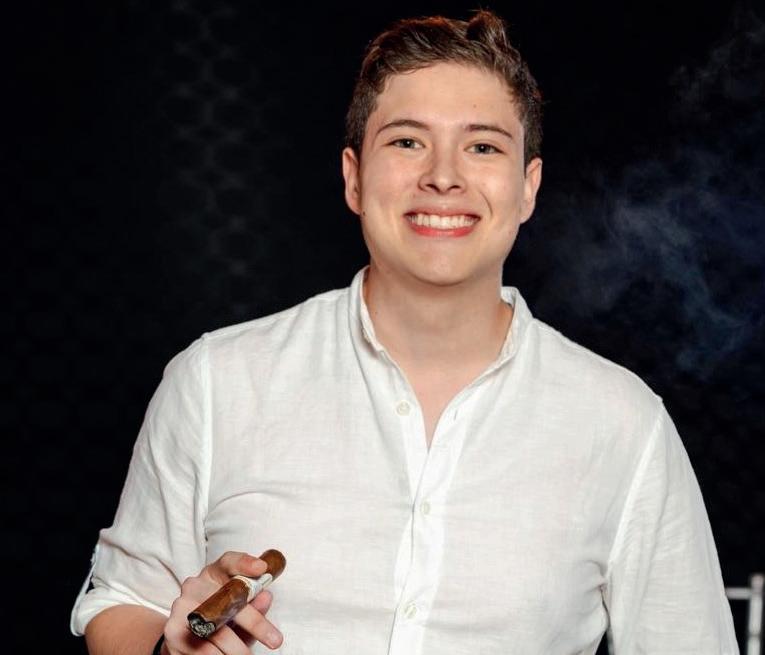
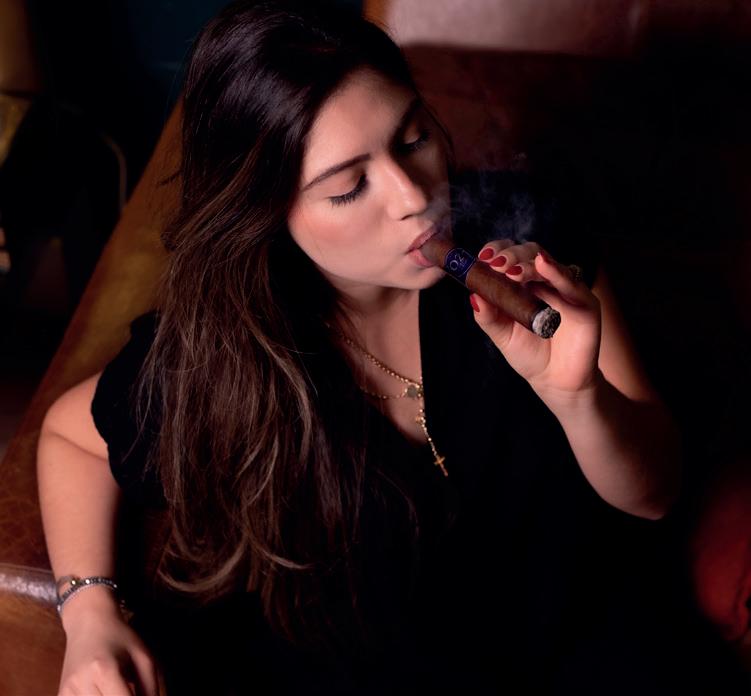
In line with his background as an engineer and entrepreneur, Don Óscar’s first step was to focus on optimizing processes and resources within the new company, hiring and training highly qualified personnel: “a workforce that would support the fulfillment of our greatest commitment to the public –quality.”
So, from the seedbed, the plantation, the curing barn, the fermentation, and the cigar rolling, every process at Barreda Cigars must guarantee confidence in their products, which is the foundation of recognition for a formal, serious, and committed company dedicated to smokers. “Part of our success and our quality comes from the responsibility and seriousness that this industry requires,” he states.
At one point, his dream was to employ his entire family within the tobacco sector, and he has achieved it. Besides counting on his wife, he has taken it upon himself to pass down to his children “the knowledge I have acquired about tobacco, just as my grandfather Chico once did with me.”
Today, the facilities that once housed his electrical company have been transformed and grown as the headquarters of a four-generation legacy, with new equipment that now allows his employees the artisan manufacturing that brings to life every cigar leaving the factory.
He recalls that in the beginning, there were no customers or market, only a dream and an inspiration in homage to the life of a person like Don Chico –who passed away in 2017–, a nickname that is now globally known thanks to a line that is part of the catalog of Barreda Cigars.
“Some might think that combining such different worlds is crazy, but when the passion for what you do runs in your veins and is shared by family, it stops being madness and becomes purpose,” says Don Óscar.


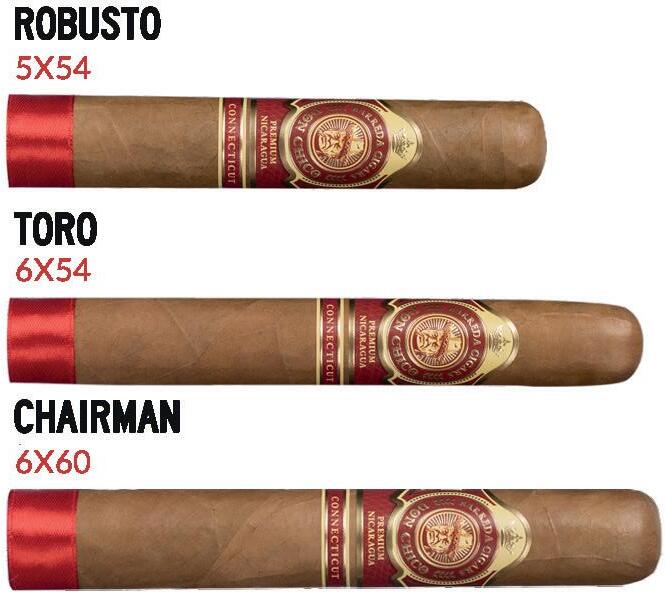
Don Chico
Wrappers: Maduro, Mexico San Andrés. Habano, Ecuador. Connecticut, Ecuador.
Sizes:
Robusto, 5 inches, 54 ring gauge. Toro, 6 inches, 54 ring gauge. Chairman, 6 inches, 60 ring gauge.

Wrapper: Habano Ecuador.
Sizes:
Robusto, 5 inches, 50 ring gauge. Toro, 6 inches, 54 ring gauge. Chairman, 6 inches, 60 ring gauge.

Barreda Vega Suprema Oro Wrapper: Habano Ecuador.
Sizes:
Gran Cañón, 4.5 inches, 60 ring gauge. Doble Robusto, 5 inches, 56 ring gauge.
Gran Toro Box Pressed, 6 inches, 54 ring gauge.
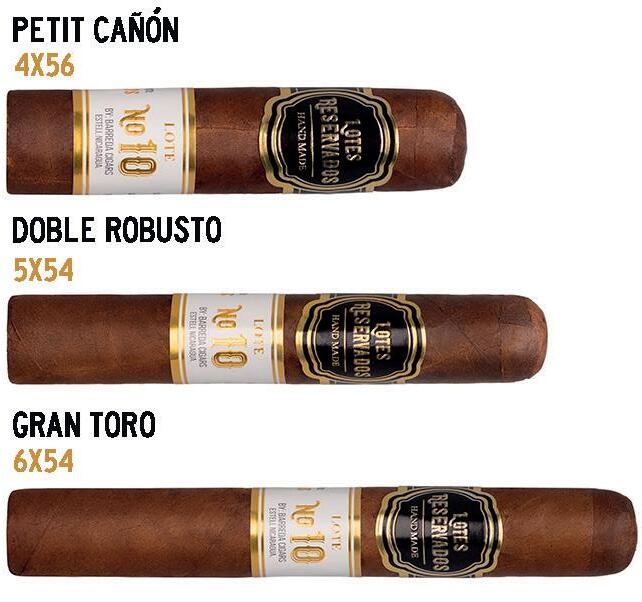
Lotes Reservados
Wrapper: Habano Nicaragua
Sizes:
Petit Cañón, 4 inches, 56 ring gauge. Doble Robusto, 5 inches, 54 ring gauge. Gran Toro, 6 inches, 54 ring gauge.

Cocktail
100 percent Nicaragua Tobaccos.
Sizes:
Puntica, 4.37 inches, 46 ring gauge. Petit Corona, 4 inches, 48 ring gauge. Robusto, 5 inches, 50 ring gauge. Toro, 6 inches, 52 ring gauge.
Sublime, 6.5 inches, 54 ring gauge.

In its early years, tobacco production was modest and came mainly from Estelí, which led the company to seek leaves from other regions to sustain the cigar rolling. Thus, Barreda Cigars began acquiring tobacco from Jalapa, Condega, and Ometepe, collaborating with renowned growers and companies. That stage marked the beginning of a journey of learning, growth, and consolidation in the industry.
Don Óscar and his team dedicated the first year of operations to defining their own identity and designing their blends. In that process, he became deeply involved, investing much of his time in tasting and analyzing each type of leaf in its pure grade, until he could recognize its characteristics with precision.
This learning not only allowed him to perfect his knowledge but also to expand his understanding of tobacco from new regions of the country, beyond the traditional areas with which they were already working. This entire process was supported by the teachings and legacy of Don Chico, who was the first to transmit to him the passion and respect for the art of selecting and blending the leaves.
He maintains that, according to his experience, a brand’s identity gains greater backing when it is involved in every part of the process, so by 2015 they ventured into the pre-industry, achieving total control of every process.

Initially, planting was done on a single manzana (0.7 hectares) owned by the family, yielding an average of 40 quintales (approx. 4,600 pounds); nothing compared to the 1,000 quintales of tobacco that they currently store in their facilities for their own production and private labels; cigars that –a testament to the family’s aspirations– are born from the hands of 40 pairs of bunchers and rollers in a room with capacity for 70 pairs, crafting vitolas from more than 60 blends with tobaccos sourced from lands planted in Jalapa, Estelí, Condega, and Pueblo Nuevo, where leaves are obtained for binder and filler of the varieties Corojo 99, Habano 2000, Habano 2006, and a bit of Criollo 98, reserved for limited editions.
Jennifer Barreda, as the head of marketing and brand image, explains that the difference between Barreda Cigars and other companies lies in their dedication to harvesting and fermentation, as they have invested to be present in all vertically integrated processes and moments, where the evolution of the plant is closely monitored, from seed to cigar.
In this family, the method of fermentation is special and is kept as a secret and a differentiating point, since time is essential and process care is precise. This dedication allows them to offer consumers distinct and clean flavors, without bitter notes in the aftertaste, which she describes as friendly and appropriate for any moment.
“Fermentation is time, heat, and humidity; there aren’t many variables... but time is a changing factor, and we let the tobacco dictate its time, without rushing, as it depends on the type of leaf, the cut, and its area of origin,” details Don Óscar.
Thus, demanding of their processes, at Barreda Cigars, drying is done naturally, controlling the humidity of the curing barns with ventilation and providing heat with specially sourced charcoal, “so that it is not just heat for the sake of heat, but something that ultimately contributes to the leaves when it is necessary to use it.”
He also specifies that regarding moisture percentages and the visual aesthetics of the leaves, they use purified water to avoid adding unnecessary minerals, and when the raw tobacco leaf has the desired characteristics, it is sent to the destemming department to continue its path within the factory and finally become a premium cigar, after more than four years from the harvest.
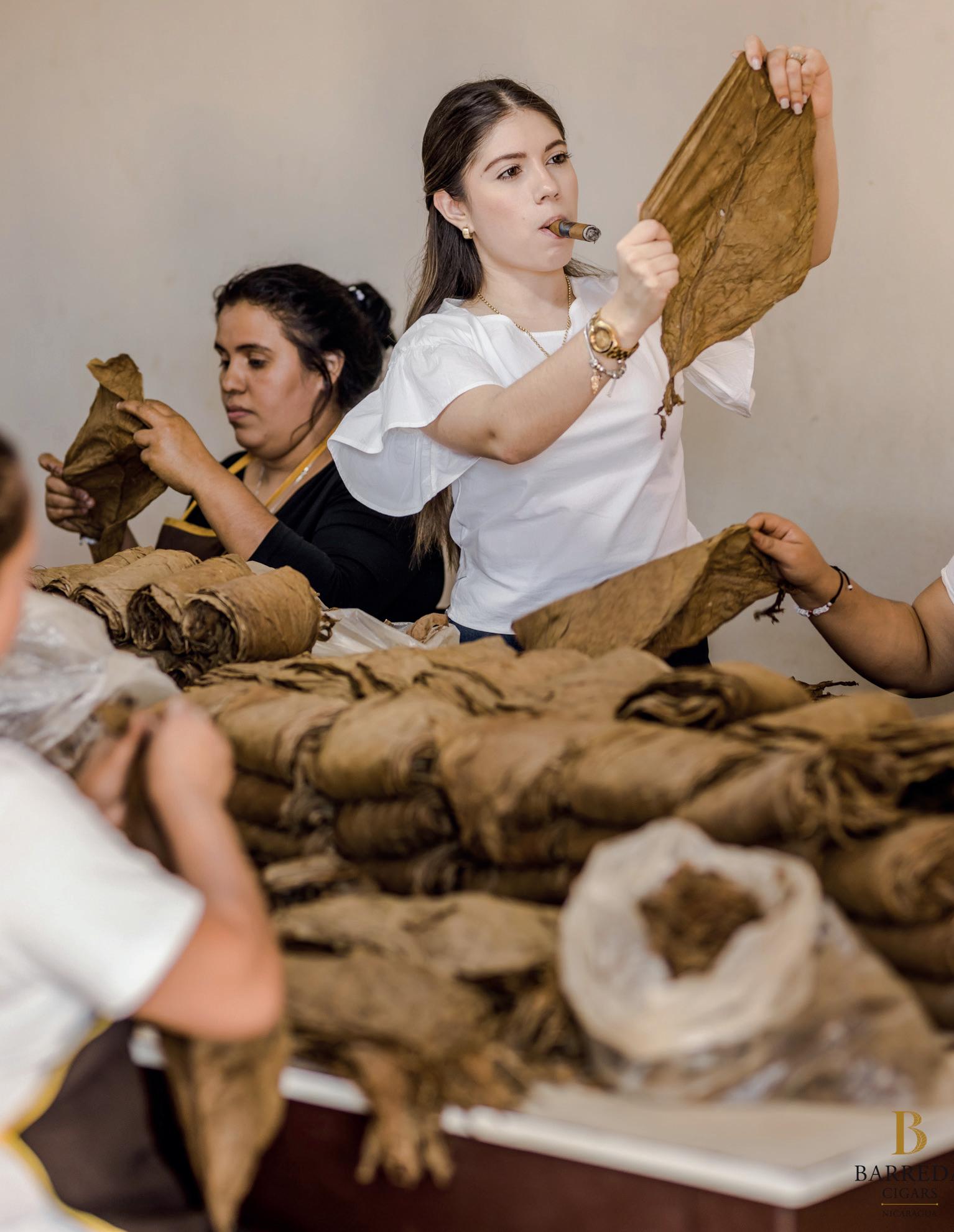
With a start marked by entrepreneurial passion and effort, Barreda Cigars faced the challenges typical of a changing industry, especially during the 2020 period. However, after the pandemic, the company experienced a solid recovery and today continues its international expansion, strengthening its presence and loyalty in the markets.
In this regard, Jennifer states that the family business has grown in production and commercialization, supported by their participation in trade shows, as well as their presence within the Nicaraguan Chamber of Tobacconists (Cámara Nicaragüense de Tabacaleros). But this is a long process in which the goal is ambitious: for the Barreda surname to be an important part of the national and international industry and to be permanently linked to the excellence of Nicaragua’s tobacco industry.
For this family, the next step is to explore the Asian market, while boosting the markets in Europe and the United States, where the challenges are increasingly significant in terms of tobacco regulations and rising costs due to tariffs; challenges that do not diminish their importance but rather motivate the manufacturer in their interest to overcome them: “It is something we are working on, and we have strategies ready to face whatever may come.”
Proof of this is that starting this year, Barreda Cigars opened an office in Houston, Texas, U.S.A., carrying out the necessary licensing procedures to handle their own distribution and achieve total control of the production chain.
Furthermore, Jennifer explains, a sales team is being formed with the goal of strategically covering most of the U.S. territory, bringing the essence of the brand to every corner of the country.
At the end of this month, the new Lote Reservados Altagracia line –named after a municipality on Ometepe Island– will be launched in Spain. It is a medium-to-full profile blend presented in a 5.5-inch, 56ring gauge size, with an Ecuador wrapper, a Honduras binder, and a medium filler from a special selection of Nicaragua tobaccos. Meanwhile, new projects are being prepared in the different markets for 2026.
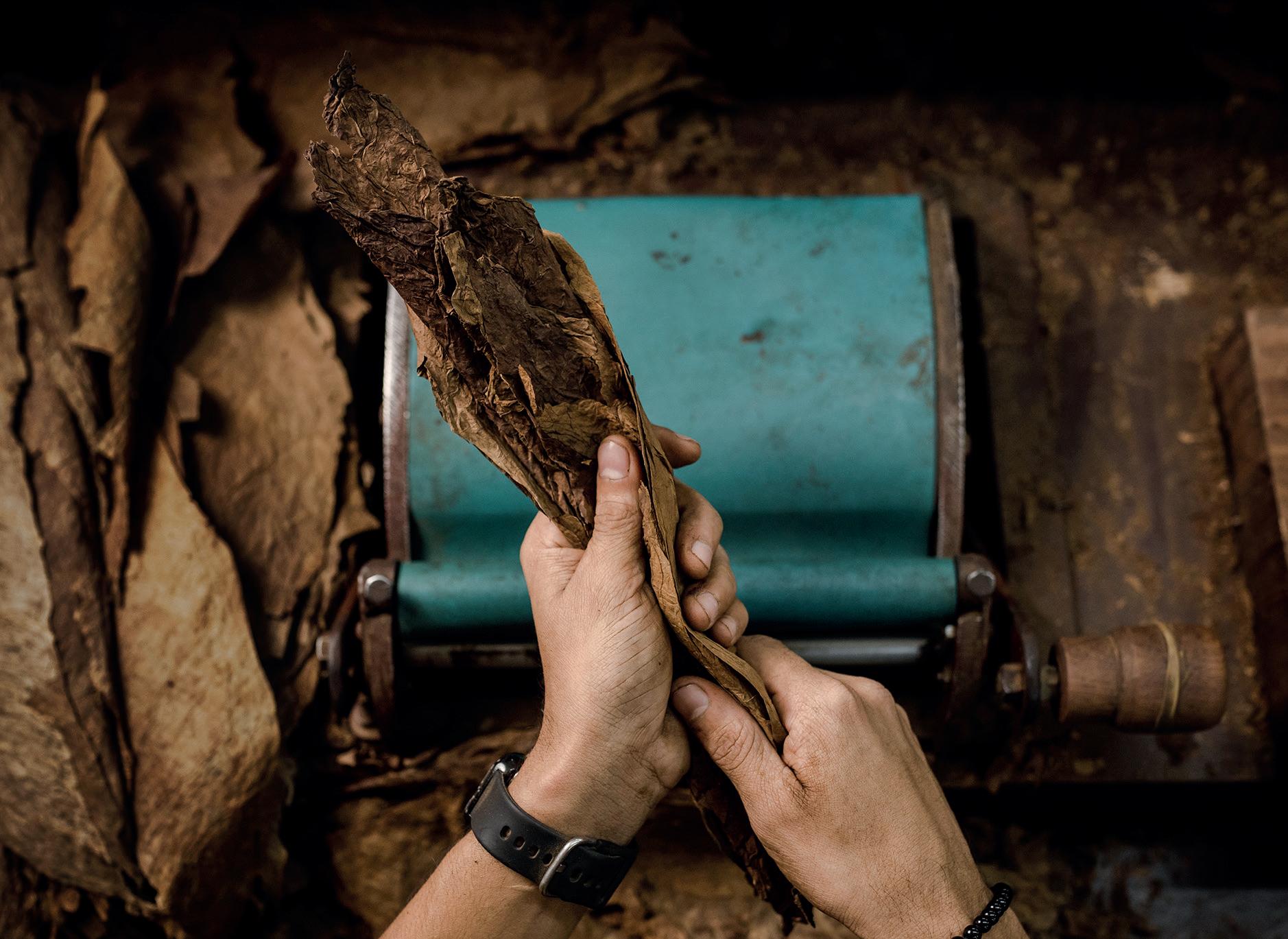
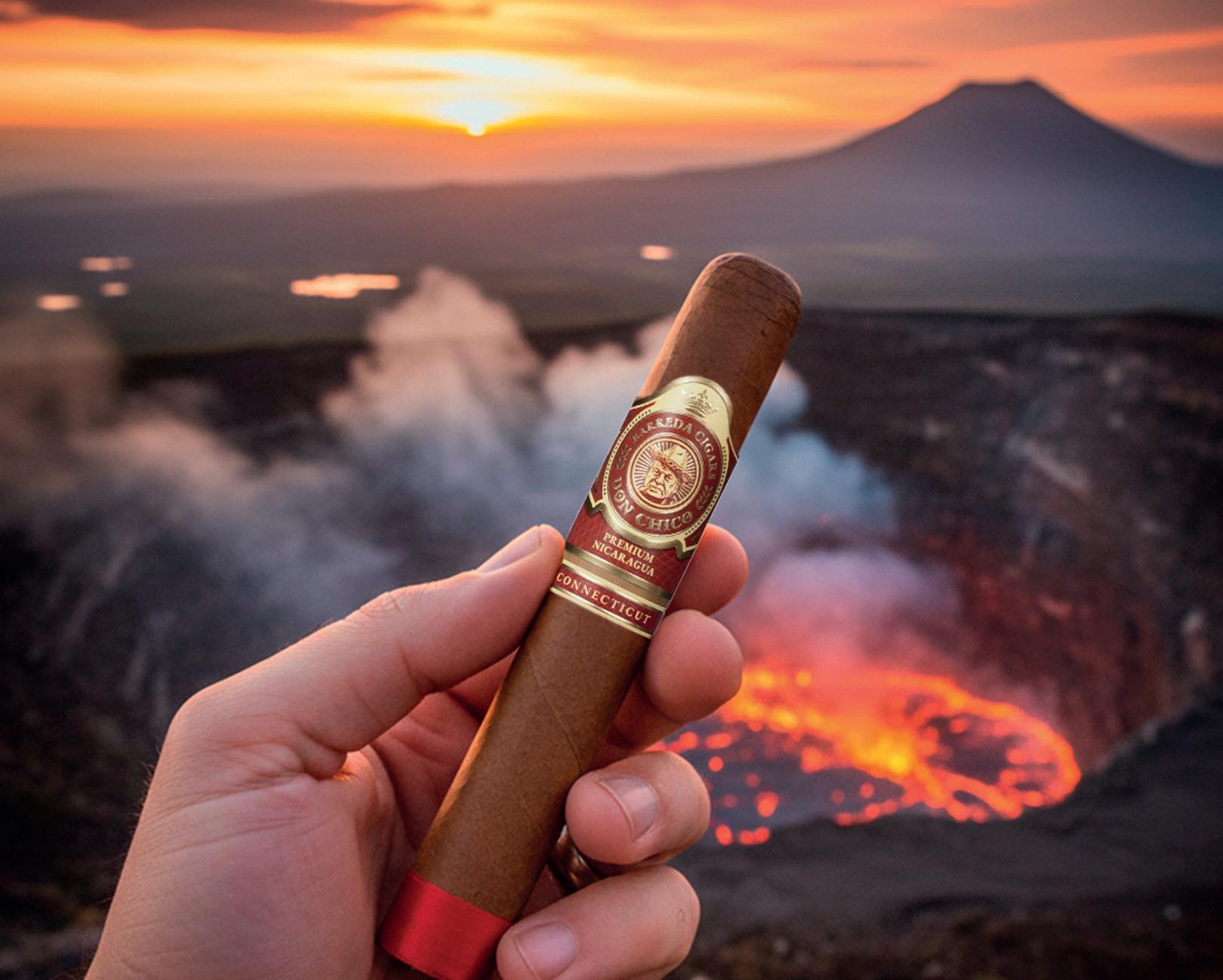
For Don Óscar and Jennifer, the past is nothing more than proof that dreams guided by faith and family effort can be transformed into a promising legacy.
As a growing brand, Barreda Cigars is currently actively participating in the boom that this sector is leading within the international tobacco industry. It is a one hundred percent Nicaraguan company that, in contrast to a short life, accumulates decades of experience in the hands of its employees and owners, who share the desire to exalt their homeland, their land, and their tobacco.
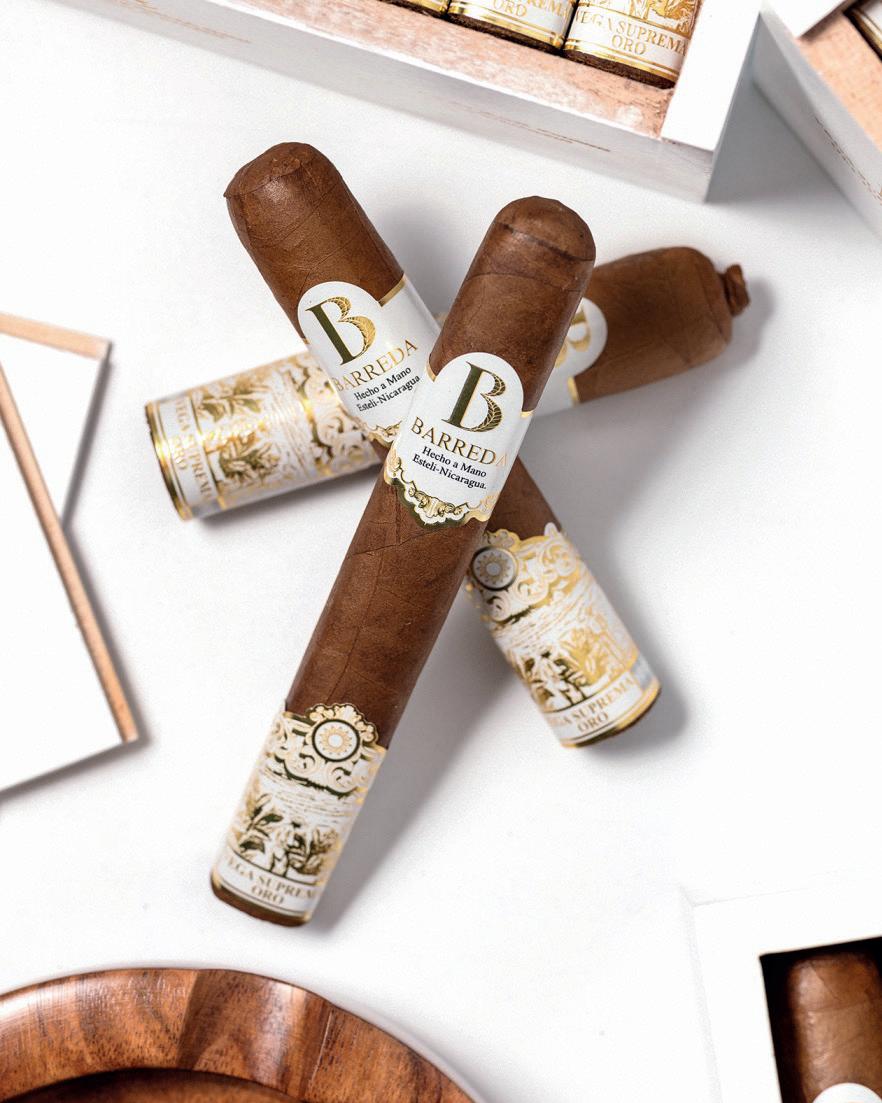
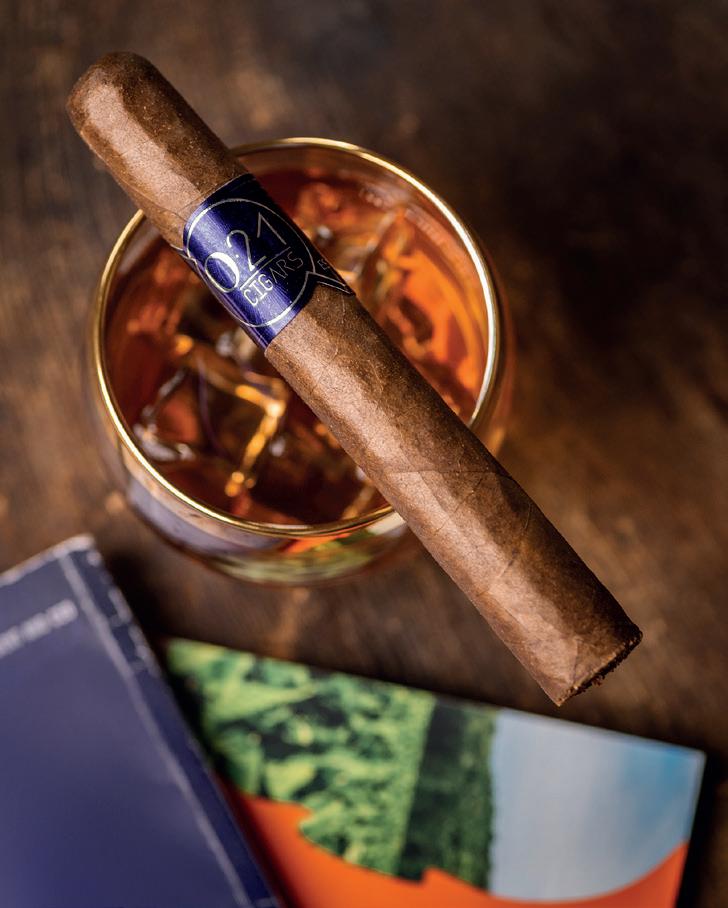








In an industry of traditions, yet in constant evolution, Wood and Waters brings Eleven50 to the premium tobacco market –an innovative product that multiplies the possibilities of enjoyment and the pleasure of smoking, thanks to a small, portable accessory that is inversely proportional in utility.
Wood and Waters was born from the friendship between Mitchell Toland and Joshua Zepeda, lifelong friends who parted ways while living in Miami. Mitchell served his country in the Army, and Joshua advanced in the tobacco industry, paving a path where they reconnected and which they now travel together.
Joshua was born in the United States, but carries tobacco DNA. Born to Honduran parents with a trace of Nicaraguan blood, at the age of 18 –invited by a friend– he joined Coco Cigars, a tobacco shop that welcomed him into this industry and is now his client.
After a couple of years’ hiatus, his next step was as a partner in a cigar shop in Hallandale Beach, where over nine years he gained the experience and contacts with which he is now venturing into a new personal endeavor.


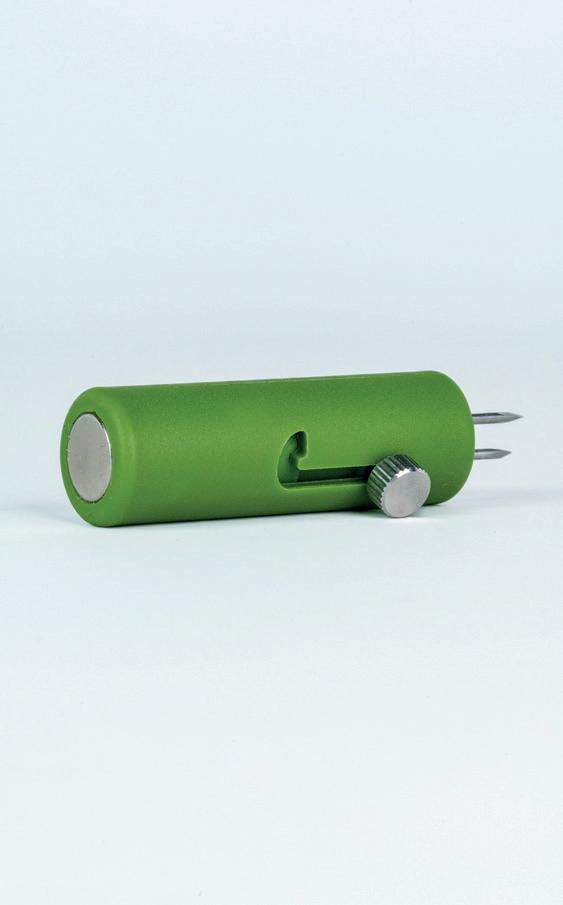
“During those years of smoking and engaging with the market, I discovered the need for an accessory to enjoy a cigar from start to finish. I remember an Italian customer who consumed his cigars all the way down with the help of a toothpick, and I thought there might be a way to create a formal accessory based on that same idea.”
While Mitchell continued his military career, Josh began researching and learning about 3D design software, created a prototype, and sent it to a manufacturing company in California to test its functionality with a tangible sample... but it needed improvement.
The turning point came when a friend gifted him a corn on the cob holder.
“With a single toothpick, the cigar spins, but with two prongs, the experience is different,” he recalls.

For two more years, with Mitchell retired from the Army, they worked together on the design, testing materials like wood and ceramic, and taking the first steps into 3D printing, which by then was an affordable product.
Thus, night after night, the team ran tests until 2023, when the first prototype left their hands to be evaluated by professionals. A year later, with an improved model, they began their production process.
On January 28, 2025, they obtained the final product, created the company Wood and Waters, and prepared everything for their presentation during the Premium Cigar Association (PCA) Trade Show, under a name that evokes this pair of friends’ connection to the outdoors.
Mitchell and Josh had an innovative and functional product in their hands, but they needed to find the right name. The search lasted a couple of nights, amidst smoke, chatter, and cigars enjoyed from start to finish.
According to Josh, during one of those nights, someone said: “I love this product because if I’m going to pay $12 for a cigar, I want to smoke at least $11.50 (Eleven50)”; a moment that not only marked the end of the search for a name but was the birth of the slogan and the concept with which they are now conquering the market for smoker accessories.
“The strength is that it becomes an indispensable accessory. For us, it’s already strange to smoke without using it and being able to enjoy the cigar until the end.”
Eleven50 is not just a cigar pick to enjoy your cigar down to the nub, like many other elegant accessories that exist. It also includes a magnet, an idea that again arose from the adventurous essence of its creators.
“Since childhood, we were always mischievous and lived our lives outdoors, fishing, hunting, playing golf, or participating in car races; always with our hands busy or covered in grease. Almost everything we touch in our activities has metal; I put my Eleven50 on the tank of my Harley and ride the road.”
Thus, thinking about their own needs –which are those of many modern aficionados– it was easy for them to innovate in this respect. “We made it for ourselves, and it turned out to be useful for others.”
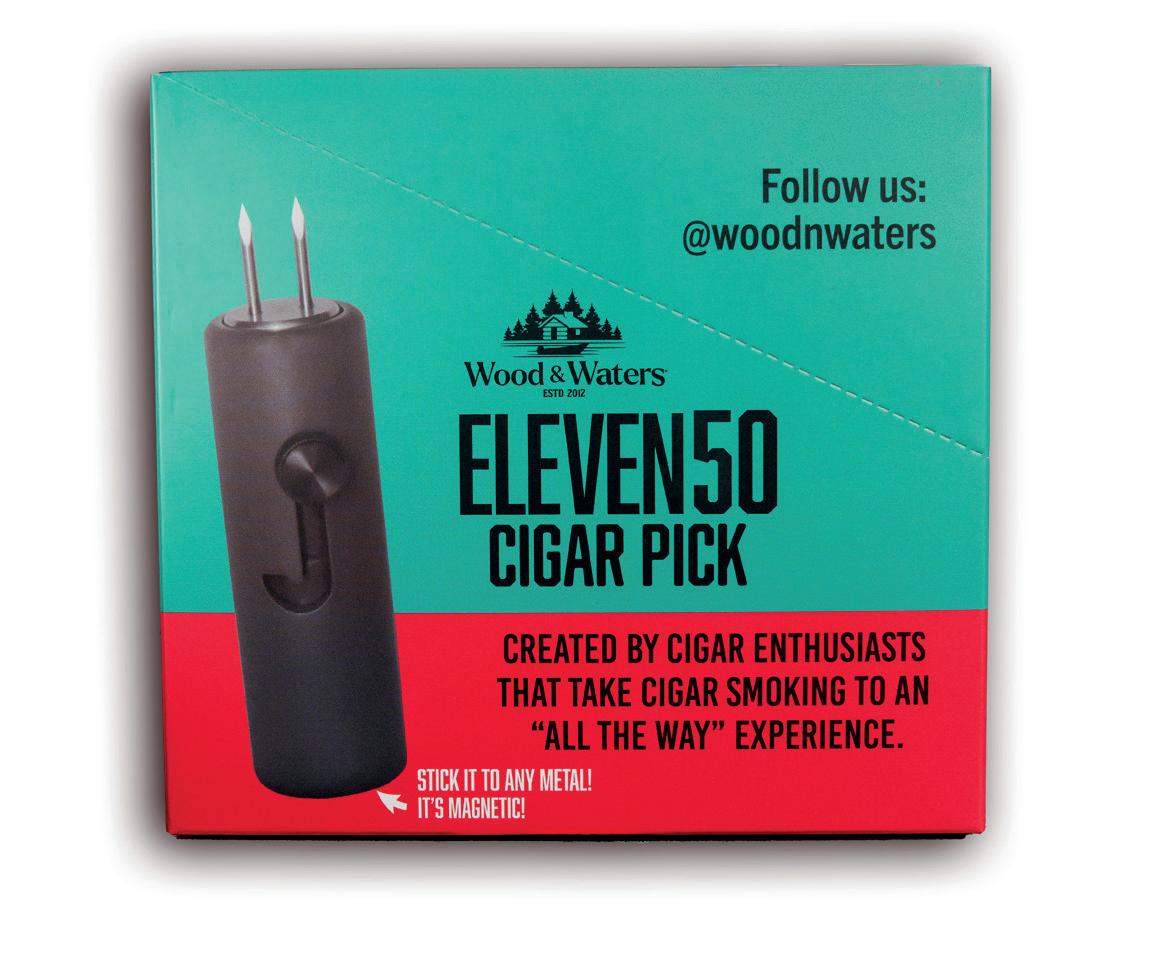
As a consumer, Josh knew it was an unusual accessory, considering the tradition within the industry, but he also relied on the generational change the market is experiencing, with more people accepting new things and the conjunction of different activities with tobacco.
“There will always be those who prefer one thing or another, but the market is expanding and opening opportunities for cigars with origins beyond Cuba, for different ages and social strata, and the future of the industry is with the youth,” he states, although to his surprise, older people use it too.
The debut of the Eleven50 was at The Great Smoke, where it was a success. This motivated them to take it to the PCA Trade Show in New Orleans, and as a result, Wood and Waters is already in 24 different stores and 40 points of sale.
In the future, Mitchell and Josh seek to add three or four more products to the Wood and Waters catalog, aiming to achieve momentum in a couple of years to dedicate themselves to their company exclusively.
Social media has also opened access to the industry and its audience. “If you put enough line in the water, something will bite,” and that’s what they did, sparking interest in Europe, as well as in some large brands to incorporate Eleven50 into their promotional items.
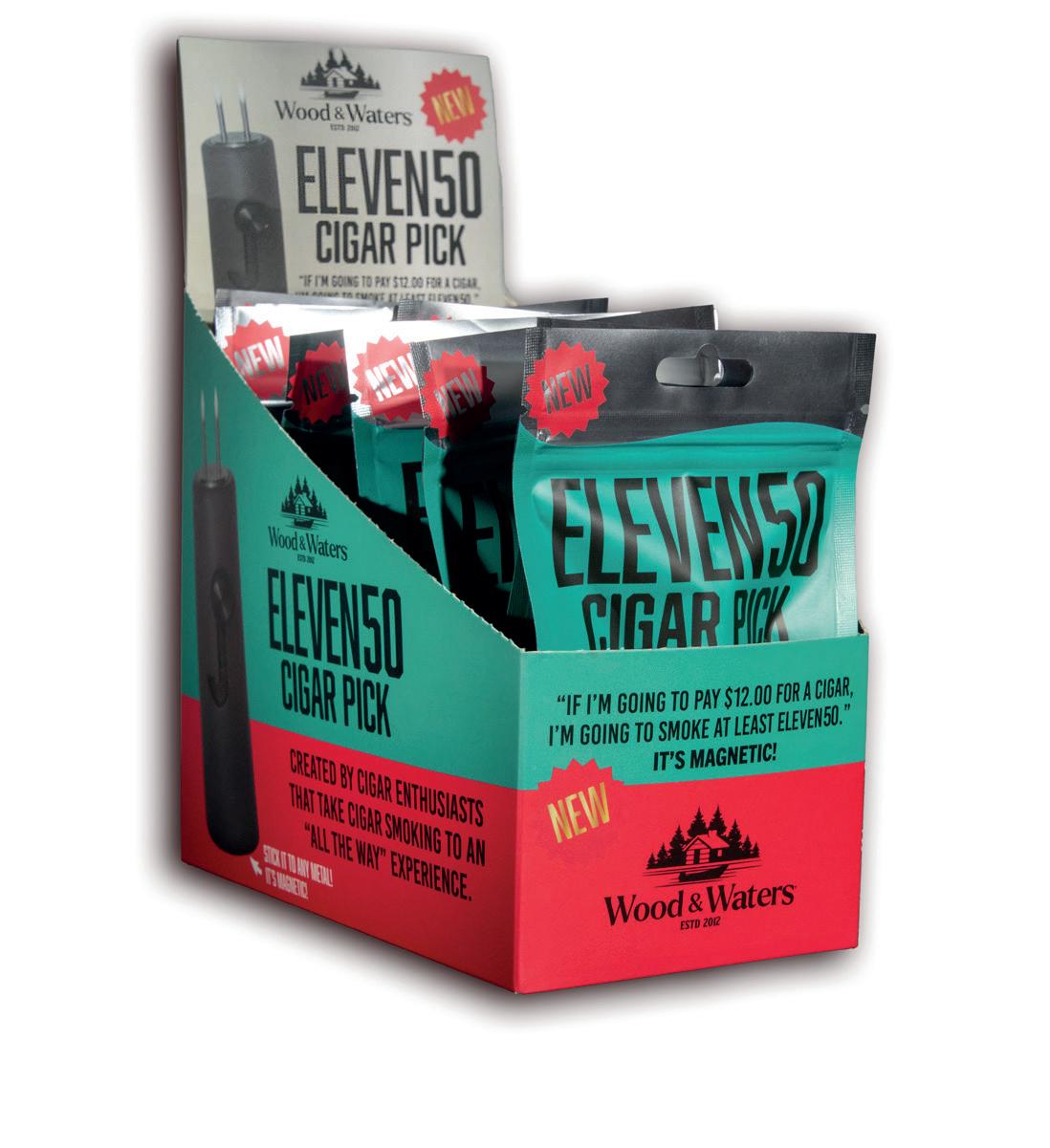

The company is sustained under a 100% family scheme, in which Josh, his wife, and their daughters, aged 8 and 4, hold “packing parties” to label, bag, and prepare each box sent to the stores, while Mitchell contributes his military experience and discipline to bring order to operations and contribute to the growth strategy.
“I have made the best friends in this industry: I met my wife, I paid for my house with tobacco dollars, and the goal is to leave something behind for my daughters, for Mitchell’s family, and continue strengthening relationships through tobacco. Some of our future goals include collaborating with a charity that supports veterans’ causes, as well as organizations dedicated to environmental issues.”
We are talking about two lifelong friends who separated as they grew up and reconnected a couple of years ago, united by tobacco leaves and the creation of an accessory inspired by their own experiences. They seek to share a bit of their hobbies and tastes with a community that is characterized precisely by cohesion and a desire to collaborate in unity.
“We don’t pretend to become millionaires. We actually did it for ourselves, and although it is indeed a business now, it remains something personal that the market has enjoyed.”
Since 2017, the Sisters of the Leaf Global Movement has been reshaping the cigar world, paving the way for a new era of empowerment and recognition for women. Founded by the visionary leadership of Dr. Anastasia Psomiadi, this movement has redefined the cigar world, making it a space that acknowledges and highlights women’s contributions.
Central to its mission is the empowerment of women, achieved through education, promotion platforms, mentorship, selfexploration, and fostering personal growth. The Sisters of the Leaf Global Movement represents a transformative shift, breaking barriers and opening doors to new opportunities for personal development and network building for both women and men.
Supported by its esteemed Advisory Board and Chief Business Development Officer, Lefty Karropoulos, the SOTL Global Movement inspires individuals, as well as local, national, and global associations, to develop similar initiatives and drive impactful change in the cigar industry and beyond.
Key Initiatives and Impact
· Education Through SGM Maestro School of Certified Cigar Sommeliers:
Education is central to SGM’s mission, represented by the Certified Cigar Sommelier Tobacconist (CCST) program. In partnership with Tobacconist University, this comprehensive certification provides participants with in-depth knowledge of cigars, equipping them with valuable skills, enhancing their expertise, and opening doors to new opportunities in the cigar industry. It empowers both women and men to excel and thrive professionally while deepening their appreciation of cigar culture.
·

· The SGM Maestro School of CCST Alumni:
The mission of the SGM Maestro School of CCST Alumni is to build a vibrant community of graduates, providing a platform for networking, knowledgesharing, and professional growth. Through its collaboration with Humo Latino, SGM will showcase interviews with Alumni members, available in both Spanish and English. These stories highlight their journeys, achievements, and passion, serving as an inspiration for aspiring sommeliers and contributing to the global appreciation of cigar culture.
· SGM - Women-Friendly Cigar Destinations:
SGM is transforming cigar lounges, shops, resorts, bars, restaurants, clubs, and more with its Women-Friendly Certification, setting a new standard for respectful and welcoming environments. The vision is to build a global network of SGM Cigar Destinations that uphold

these values and elevate the quality of cigar culture. Certified venues must meet specific criteria, such as offering cigars from women-owned brands, training staff, hosting educational events, and collaborating with local organizations.
· Global Dialogues and SOTL Roundtables:
For the first time in cigar history, within the principles of social responsibility and business ethics, the SOTL Global Movement initiated a groundbreaking international dialogue to present women’s stories, their perspectives on the stereotypes they have faced, potentials, achievements, and aspirations. Since 2019, the movement has organized 11 “Changemakers” Roundtables, conducted in-person, virtually, and in hybrid formats, creating a significant social impact and fostering meaningful influence in the cigar world and beyond.
· Rum Festivals Collaboration: Through a partnership with The Rum Lab, SGM provides free platforms and booths for cigar brands and lounges, bridging the gap between cigar and rum audiences at Rum Festivals across the USA. This collaboration, initiated in 2023, engages enthusiasts through VIP pairings and exclusive events, further strengthening the connection between the rum and cigar communities.
· Supporting Local, National, and Global Initiatives: SGM has mentored women and supported various initiatives, uplifting voices, empowering communities, and offering ideas, models, and access to networks. It fosters personal growth, helps set new goals, and helps initiatives and projects to succeed.
Dr. Psomiadi, as a social innovator, academic, and entrepreneur, has redefined the cigar world by integrating social psychology and sustainability methodologies into the movement’s framework. Her vision extends beyond cigars, emphasizing connectedness, the social health of cigar enjoyment, and the broader impact of every initiative that reflects respect, self-growth, and social development.

When I attended our recent SOTL Global Movement meeting in Tampa, I left inspired –not just by the conversation, but by the collective power of the women who are shaping the cigar industry across continents.
Robin Blue
Iwanted to find a way to make a positive impact on the organization, but I wasn’t sure how to go about it. When Dr. Anastasia Psomiadi summarized the discussion, she spoke passionately about how the movement is transforming.
The organization is evolving from simply highlighting women in cigar culture to actively shaping what leadership and partnership look like across all the industries that cigar culture touches.
That vision profoundly inspired me. I wanted to take that same energy and translate it into something that could connect women and communities on a global scale –something that reflected the sophistication, leadership, and innovation already existing within the SOTL Global Movement.
By nature, I am a researcher, so I began looking for something that could help me energize, engage, and contribute to the organization. I searched for weeks, exploring ideas that could elevate SOTL’s visibility and global reach. I asked myself: What is happening on the world stage that meets our objectives?
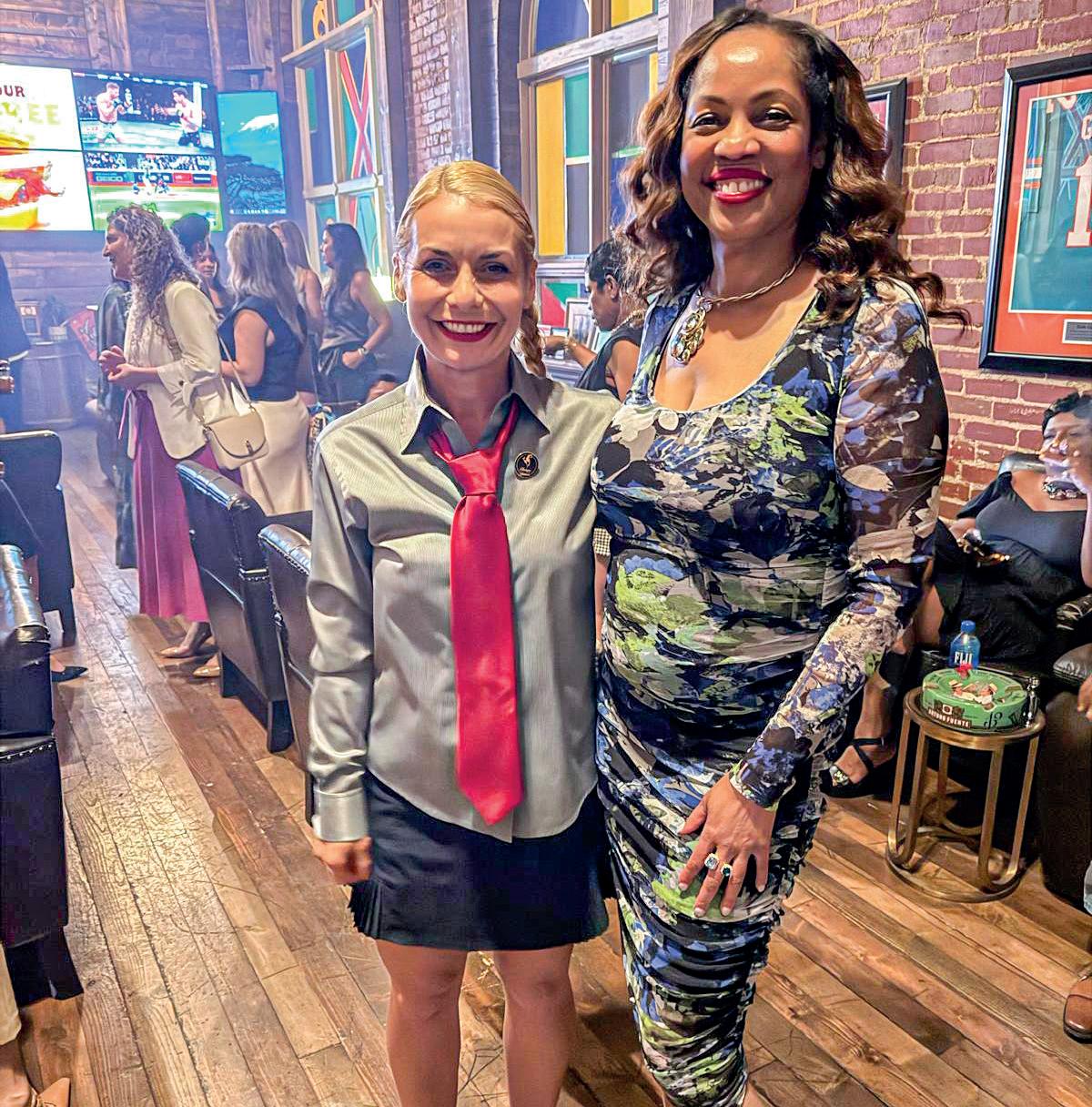

Then it hit me: the FIFA World Cup. The biggest sporting event in the world. I knew I was shooting for the stars, but with matches set to take place across 16 venues in the U.S., Mexico, and Canada, it seemed like the perfect opportunity to connect our movement with something truly global.
I envisioned SOTL Watch Parties in women-friendly cigar destinations in those host cities, with one major condition: every venue would have to be a Women Friendly Cigar Destination, which fits perfectly with one of SOTL’s core initiatives.
I wanted to design something that not only celebrated women but also positioned SOTL as an international force.”
At first, I thought this might be a cool idea, but how would it be received? As someone new to the organization, I wasn’t sure what a proposal of this scale would look like. My next step was to present it to Dr. Anastasia Psomiadi and then hold my breath.
“THAT IS AMAZING!”
I was stunned and thrilled at the same time. That moment of encouragement gave me the confidence to take the idea further. From there, my program manager experience kicked in: I began mapping out the logistics and identifying potential SOTL Hosts and my partners in Atlanta, such as Burn by Rocky Patel and others, who could bring the vision to life.
It has been both rewarding and challenging, but deeply satisfying to see an idea grow from curiosity into a global initiative. I never imagined that something like this could happen, especially being someone who thought you had to be a board member to suggest such a concept. The rest, as they say, is history.
Because I was raised in a military family, I have lived all over the world. That experience molded me into a global American with a deep appreciation for culture, connection, and shared experiences. Whether I was in Europe, Asia, or here in the U.S., I learned that people everywhere are united by the same things: laughter, good conversation, and moments of celebration. Cigars, much like culture and sport, have a way of bringing people together.
When Dr. Psomiadi encouraged me to think creatively and come up with an idea, I saw it as an opportunity to combine my experience in product innovation for a Fortune 50 company with my passion for global connection. I
The FIFA Watch Parties strategy demonstrates that women in this industry are not just participating; we are leading, innovating, and shaping experiences that define the future of cigar culture.”
wanted to design something that not only celebrated women but also positioned SOTL as an international force.
The Event Strategy for the FIFA Watch Parties was built around that vision: connecting two worlds that already speak a universal language –cigars and soccer. The FIFA World Cup unites people across all borders, and I wanted SOTL to be a part of that global celebration.
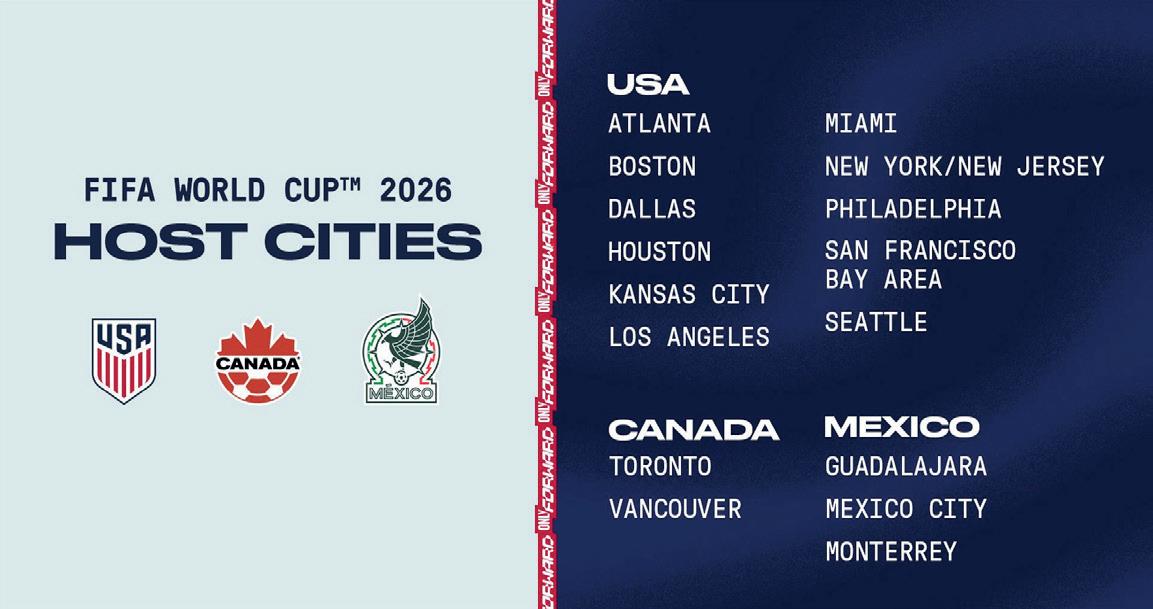
The goal was to organize coordinated events in women-friendly cigar destinations around the world –places where female enthusiasts feel welcome, respected, and celebrated. Each event would be more than just a gathering to watch the game; it would be an opportunity to showcase SOTL’s presence, highlight our hosts, and create community moments that reflect the elegance and inclusivity of our movement.
With my background in innovation, I approached it like any major product launch: thinking about the audience, partnerships, and scalability. I collaborated with SOTL hosts and lounges who shared our vision, including Burn by Rocky Patel-Atlanta and others. Together, we will create experiences that blend the excitement of FIFA with the sophistication of cigar culture –opportunities for connection.
The impact is immediate. Our Watch Parties will create new visibility for SOTL in all markets and introduce the movement to audiences who have never heard of it before. They allow our members and hosts to step into the spotlight with confidence, representing what it means to be part of a truly global sisterhood.
For me, it is not solely about cigars or sports, but about connection, representation, and purpose. The FIFA Watch Parties strategy demonstrates that women in this industry are not just participating; we are leading, innovating, and shaping experiences that define the future of cigar culture. My philanthropic background also guided the spirit of this project. I have always believed that events should go beyond social connection –they must create impact.

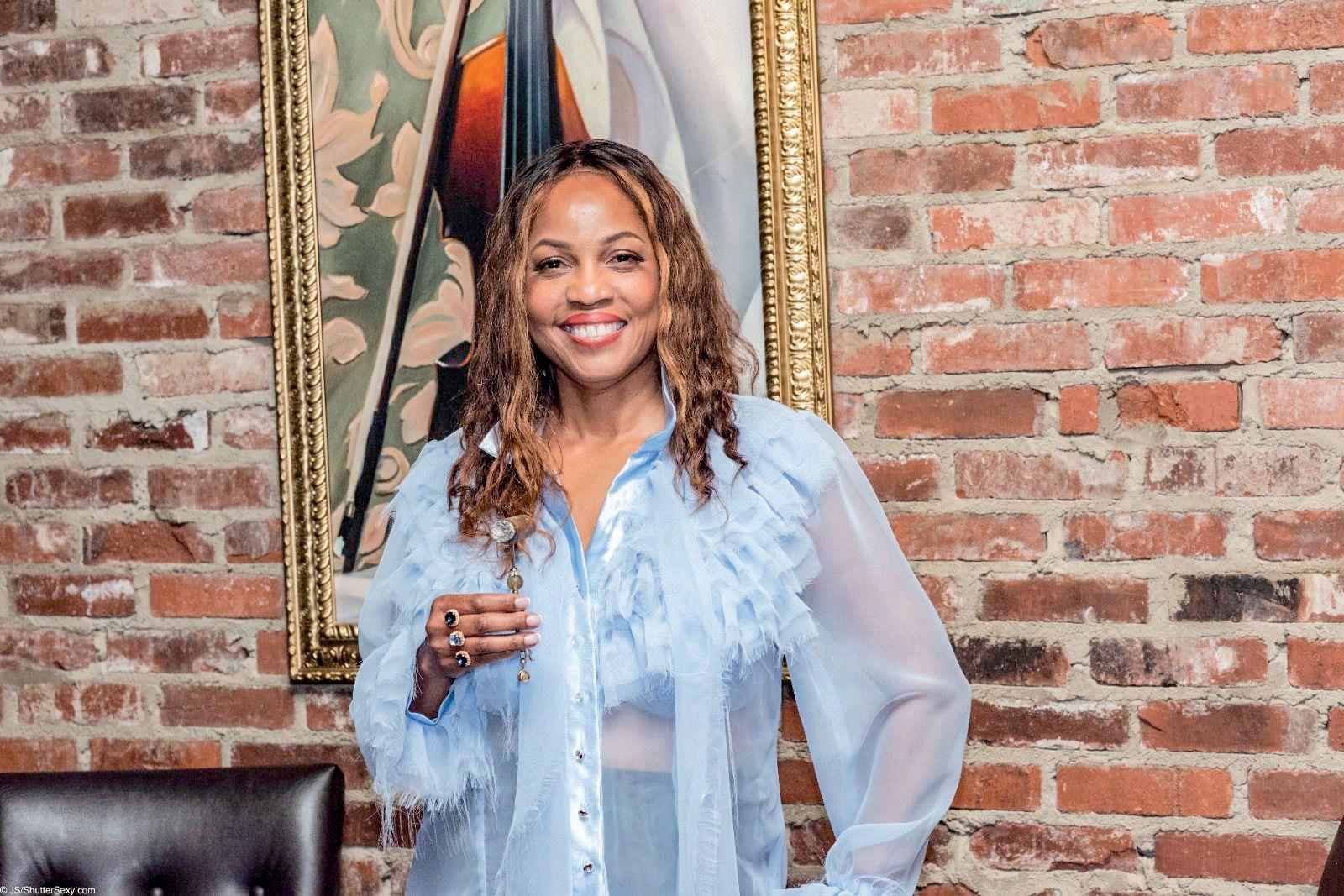
Looking ahead, I see the FIFA Watch Parties strategy as just the beginning. There are countless ideas the SOTL team can build upon –all it takes is the boldness to dream big and ensure every initiative connects major industries, culture, luxury, and empowerment.
From Tampa to the world, what started as a simple idea has become a movement within the movement: proof that when women lead with creativity and purpose, the results go far beyond the smoking lounge.
Robin Blue, CCST, MBA is a Program Manager, innovator, and strategist for the SOTL Global Movement. Based in Atlanta, she combines her corporate experience and global perspective to develop initiatives that empower women in cigar culture worldwide. She is also the Founder of BlueSmokeATL (BSA) LLC, an online shopping experience at BlueSmokeATL.com, which offers a unique collection of handmade cigar skewers and other lifestyle pieces.






Cándido Alfonso*
There is a deeply American irony in the way this country understands freedom. In some areas, the right to choose is sacred; in others, it is suspicious. For instance, in California, wine is celebrated as art, and in Kentucky, bourbon is a symbol of heritage, but in those same jurisdictions, a premium cigar –handcrafted with the same spirit of tradition and artistry– is considered almost a public threat.
This is a country that prides itself on defending individual liberty, yet when it comes to pleasure, the line between what is permitted and what is prohibited seems to be drawn whimsically. What a citizen can drink with pride, they can hardly smoke without guilt.
The wine industry in California generates more than 70 billion dollars annually. Bourbon, protected by federal law as “America’s native spirit,” contributes over 9 billion and is a symbol of national pride. Both represent values the country appreciates: patience, heritage, dedication, and a taste for the artisanal; they are the liquid expression of the freedom to choose and enjoy.
However, premium cigars are subjected to a series of taxes, restrictions, and misinformation campaigns that place them on the opposite end of the cultural spectrum. In states like California, where wine flows naturally and cannabis is sold in boutiques, lighting a premium cigar can feel almost like an act of civil resistance.

The point is not to deny that all pleasure carries risk, but to recognize the inconsistency. If we accept that a responsible adult can savor a glass of wine or a glass of bourbon in moderation, why deny that same principle to someone who chooses to enjoy a quality cigar, without inhaling, in a private and social setting?
The difference may not lie in the risk, but in the narrative. Wine and bourbon managed to project themselves as expressions of art, culture, and community. The cigar, in contrast, was cornered by decades of regulatory simplifications and cultural prejudice. And yet, behind every puro is a history of hands and leaves: farmers, torcedores (rollers), and master blenders who dedicate years to creating something unique, just as artisanal and honest as any bottle of wine or barrel of bourbon.
The U.S. judicial system itself has recognized that the FDA failed to present sufficient evidence to regulate premium cigars, and that its attempt to do so was “arbitrary and capricious.” That is to say, the debate is not medical, but moral: who has the right to decide which pleasures are acceptable and which are not?
The paradoxical situation is that we live in an era where the consumer demands transparency, origin, and authenticity. Farm-to-table food, craft beverages, and conscious consumption are promoted, but when it comes to the cigar, those same values seem to vanish.
The premium cigar neither seeks to be mass-market nor seduces with advertising or addiction. Its pleasure is slow, deliberate, and social, representing the same principle that inspired wine and bourbon: enjoying life with purpose. Yet, it is treated as if its mere existence were an offense to modernity.
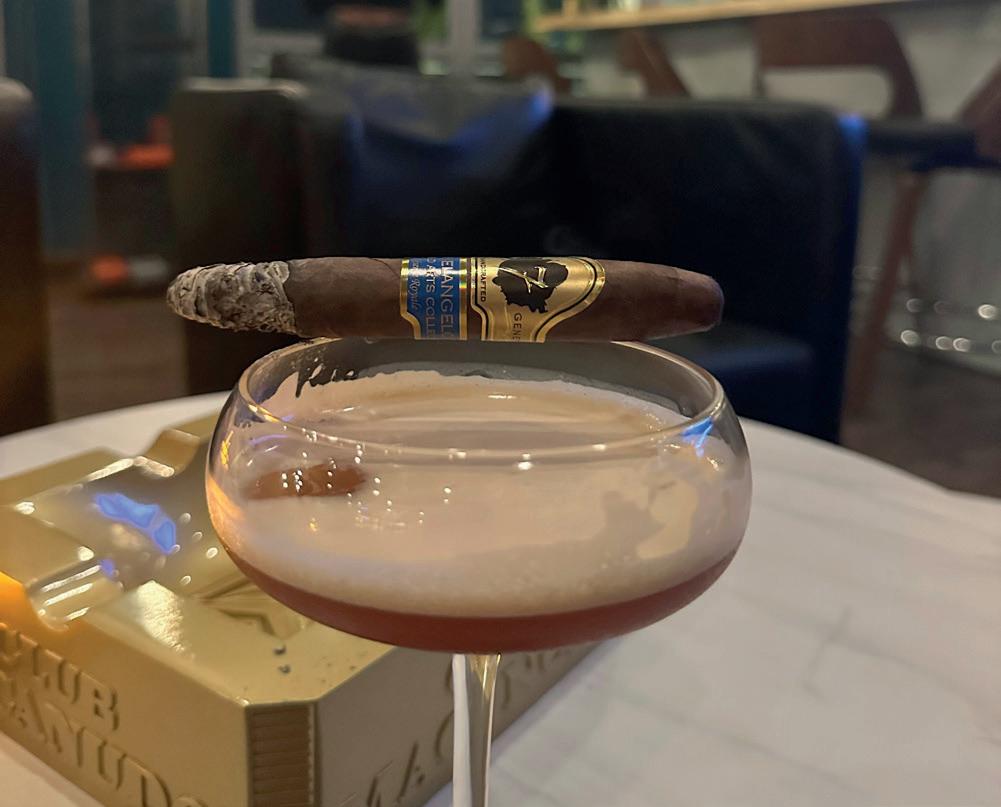

Defending the right to enjoy a cigar is not glorifying smoke; it is defending consistency. If we believe that the adult citizen is capable of choosing their diet, their drink, or their lifestyle, they must also be able to determine how, when, and with whom they enjoy a cigar. True freedom does not consist of permitting only what we approve of, but in respecting the right to choose what we do not share.
Wine, bourbon, and the premium cigar are distinct expressions of the same human impulse: celebrating time, conversation, and life. The problem is not which one we prefer, but who believes they have the authority to decide for us. Because, at its heart, the smoke of a good cigar does not challenge public health, but double standards.
* Founding Partner of Entre Humos: Lounges, Online, Retail, Puerto Rico.
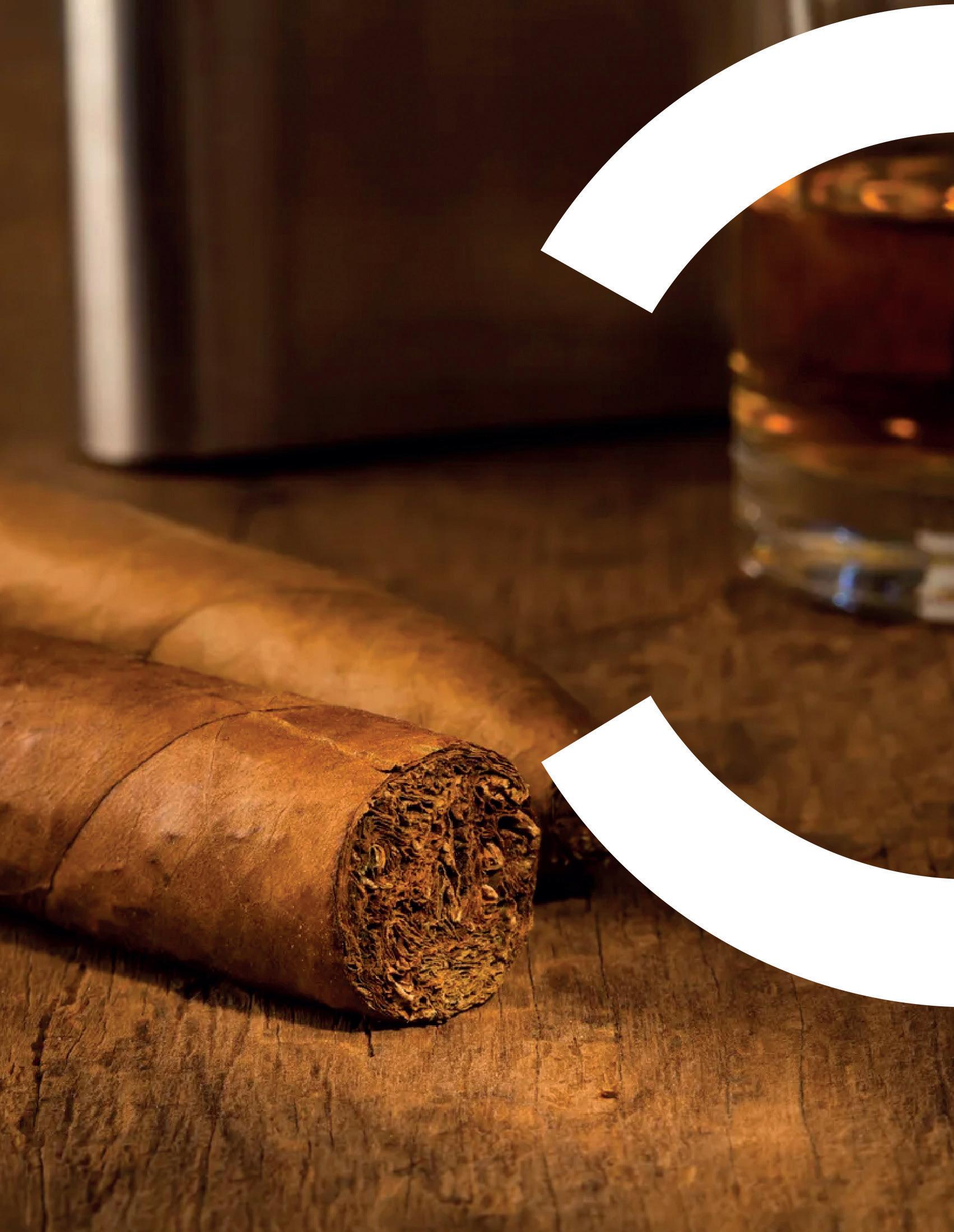

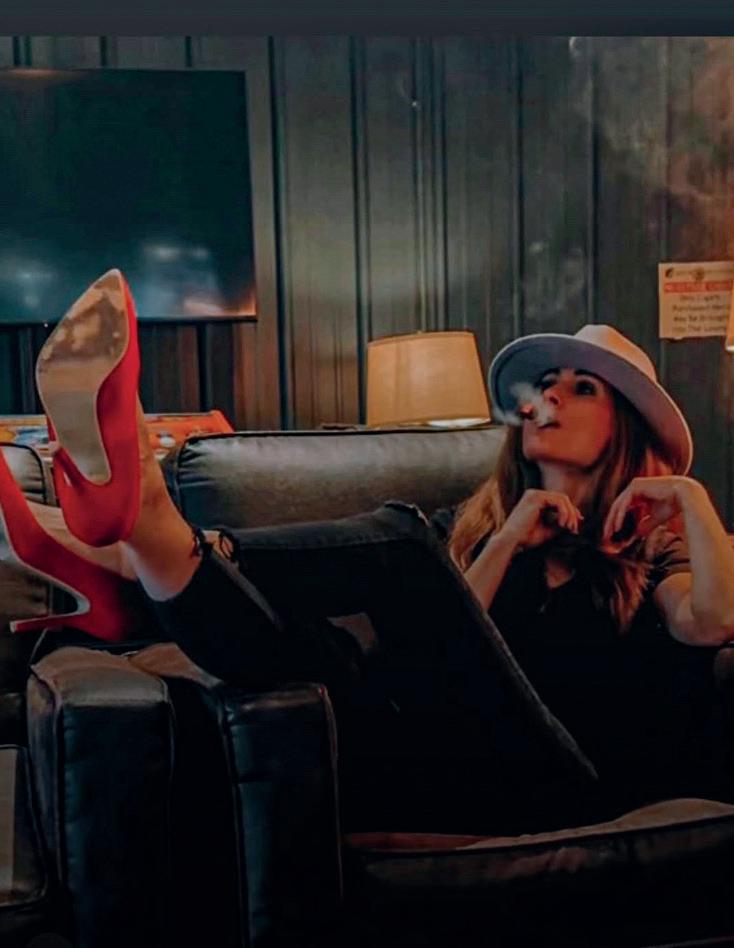
Founded by Eric Josefson and Justin Heisig, The Burn Down Podcast is a platform that brings together people from diverse backgrounds through a shared appreciation for cigars. This unique program convenes a wide range of guests to engage in rich and meaningful conversations. Each episode seeks to illuminate the camaraderie and dialogues that cigars can inspire, creating a welcoming space for listeners to connect with the stories and experiences of others.
Blanca Czebouz
In a recent episode, I had the pleasure of joining The Burn Down Podcast to explore my personal journey with cigars, as well as my passions for bodybuilding and motorcycles. One of the highlights of our conversation was recounting a special trip I took to Thailand, which ignited my love for cigars.
I took Justin and Eric back to 2004, when I attended my high school friend’s wedding in Bangkok. After arriving in Phuket, in the southern part of the country, I soaked up its stunning views and beautiful beaches. There, I found a lounge that sold cigars, and as I sat down, I couldn’t help but feel something special in the air: a lively and welcoming atmosphere, filled with people from all over the world, and the aroma of the cigars enveloped me. I felt as if I were under a spell, absorbing every detail of that moment, which has remained with me ever since.
The atmosphere was lively and welcoming, and the aroma of the cigars enveloped me. I felt as if I were under a spell, absorbing every detail of that moment, which has remained with me ever since.”
Then, life moved on, and I didn’t think about cigars again until 2019, when I reconnected with them. I decided to take the time to learn how to cut, light, and smoke them. For me, enjoying a premium cigar is truly an art form. During the podcast, Justin mentioned that it is consumable art, and those words truly resonated with me. I will definitely add them to my cigar vocabulary!
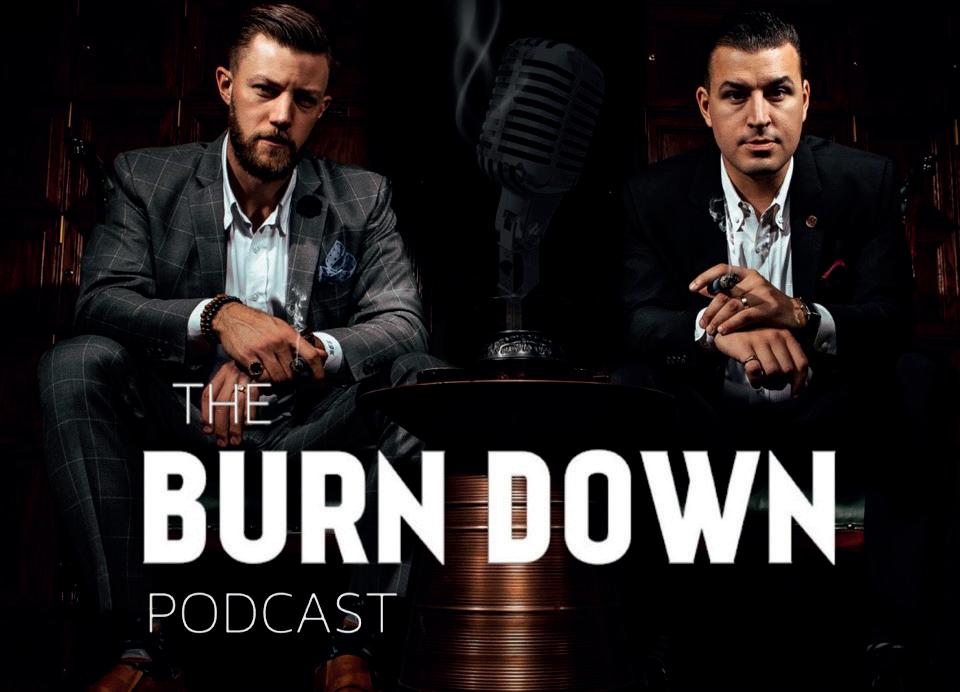


As my exploration continued, I loved trying different blends and learning from knowledgeable people in the industry about the rich history and craftsmanship behind cigars. It was an unforgettable experience that deepened my love for tobacco and connected me with a diverse range of people from all walks of life.
I also discussed my passion for bodybuilding with Eric and Justin, highlighting the dedication, discipline, and determination required to compete. I shared the experience of my first competition, where I felt the immense mental drain it took on me, especially during the last four to two weeks. At that time, I was focused solely on training, work, and family, leaving little room for a social life.
The second time I trained for bodybuilding, I was mentally better prepared because I knew what to expect. However, this also meant I had to train even harder and longer. I worked with my coach, Peter Fitschen, who not only has a Ph.D. in Nutritional Sciences but is also a competitor. He drew up my diet and training plans, and we had weekly checkins, which became more frequent as the competition drew near.
My goal was to achieve a leaner and more toned physique, and I was determined to do it. Peter supported me every step of the way, and I placed my trust in the plan he outlined. Although there were occasional adjustments, nothing was drastically different.
Looking back on my last competition, in late 2022, I realize the sacrifices made by everyone involved in bodybuilding. Without discipline, it is almost impossible to succeed in this sport. Peter was one of my biggest supporters, and I deeply valued his guidance throughout the process. Do I miss it? Absolutely!
My motorcycle adventure was ignited when I was only 17 years old, during my high school days in Cochabamba, Bolivia. It all started with Marco; he was older than me and had a dirt bike. Just remembering and mentioning his name makes my heart race. I vividly recall the day he came to my parents’ house to pick me up. He looked effortlessly cool with his leather jacket, hair slicked back with pomade, and a pack of cigarettes tucked into his pocket, exuding a rebellious vibe that captivated me.
As I approached the bike, it seemed imposing and intimidating. I had no idea how to ride it, but Marco patiently guided me, showing me the ropes. Once we were both settled, he told me to hold on tight. The moment he revved the engine, excitement surged through me, and before I knew it, we were off!
With the wind whipping through my hair and across my face, I felt alive like never before. The thrill of freedom washed over me as we zigzagged through the chaotic traffic, our adrenaline pumping. To avoid congestion, Marco effortlessly maneuvered the bike onto the sidewalk, and I could feel my heart accelerating to the powerful roar of the engine. It was a wild dance through the bustling streets of Cochabamba, and in that exhilarating moment, we became one with the ride, blending with the rush of life around us.

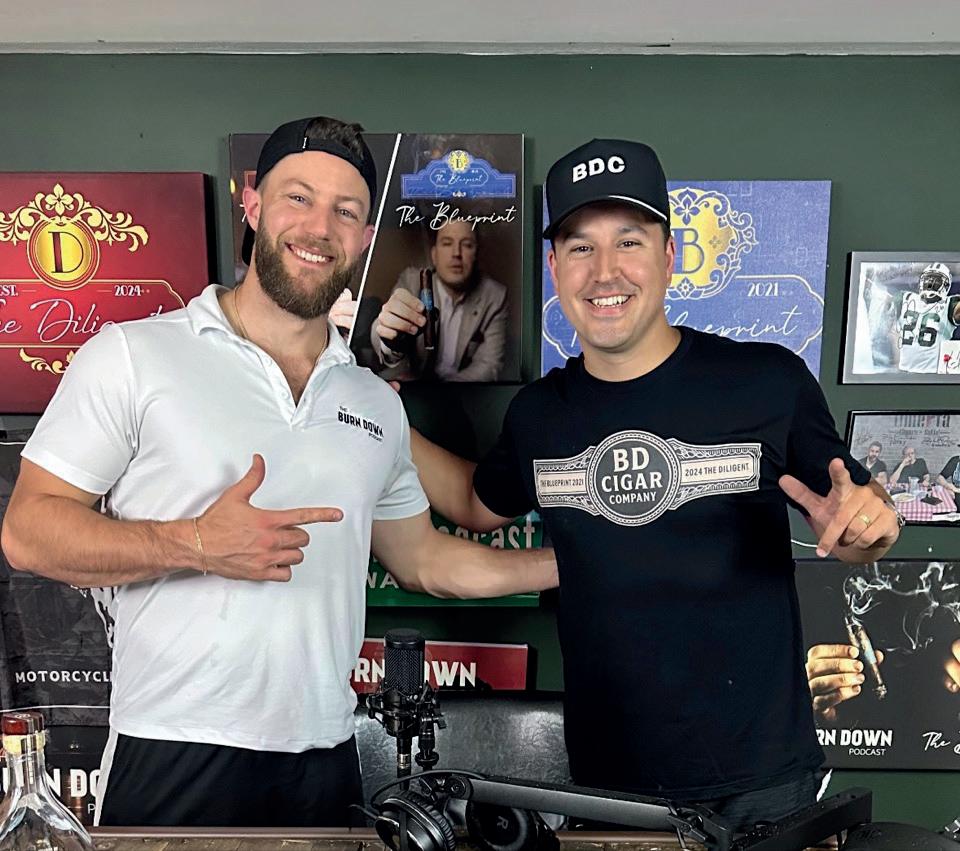
As I neared the end of the podcast, I couldn’t help but marvel at how quickly the time had flown by. It felt like only moments ago we had gathered around the microphone, eager to dive into deep discussions and share our experiences. The chemistry between us was remarkable; our conversations flowed effortlessly, punctuated by laughter and the kind of moments that create lasting memories.
We discussed various topics, from our personal journeys to the challenges we face in our respective pursuits. Each story seemed to resonate, sparking insightful reflections and a genuine camaraderie between us. I found myself not only sharing my thoughts but laughing with the humor that Eric and Justin brought to the table.
During the podcast, Justin mentioned that the cigar is consumable art, and those words truly resonated with me. I will definitely add them to my cigar vocabulary!”.
I felt grateful for the opportunity to be part of such an incredible conversation. Thank you, Eric and Justin, for creating such a welcoming environment and for the fantastic time on The Burn Down Podcast. Experiences like this remind me of the joy that comes from connecting with others in the cigar industry.

LeRoy Neiman Collection Edition
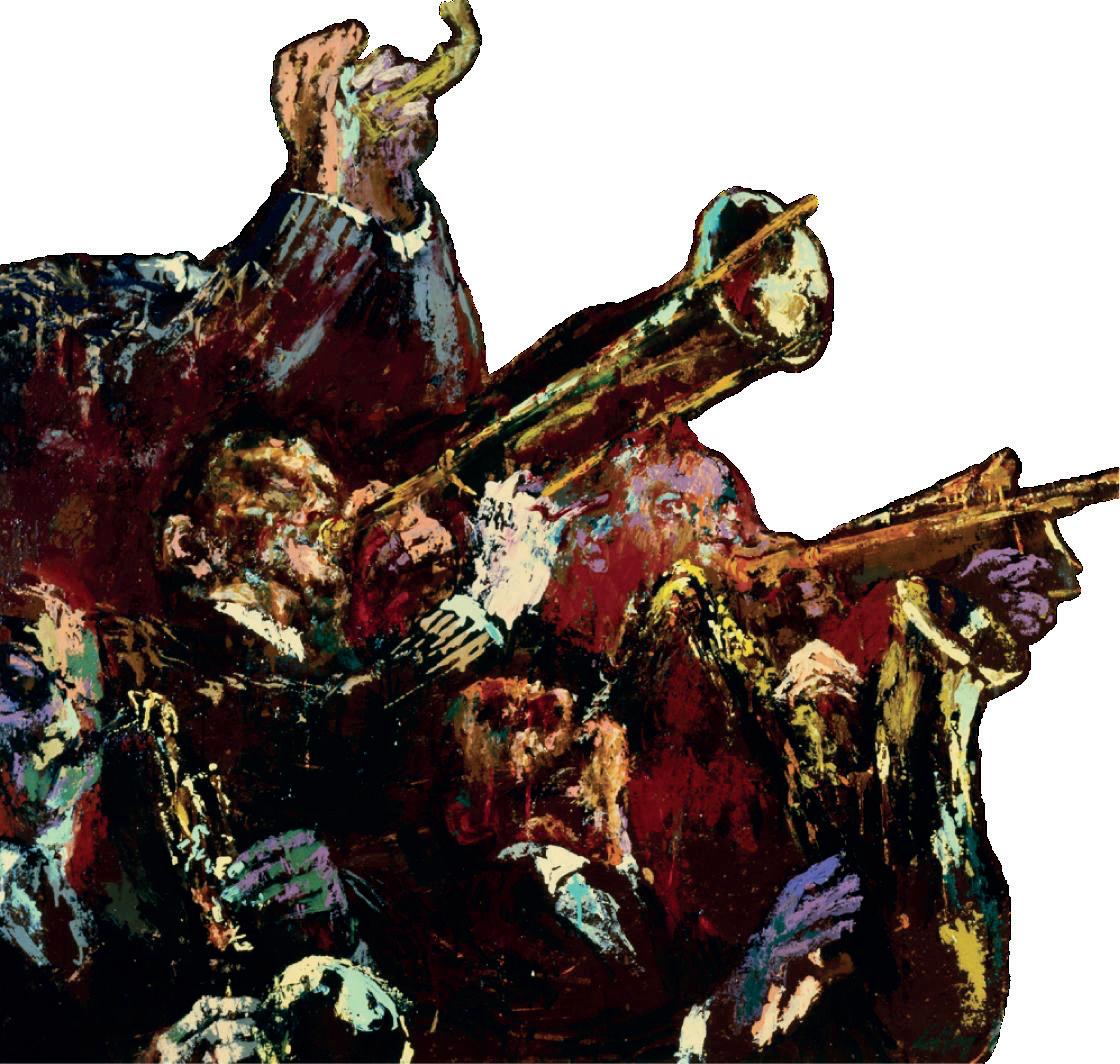
Created by J.C. Newman Cigar Company, in collaboration with the LeRoy Neiman & Janet Byrne Neiman Foundation, the LeRoy Neiman Collection Edition unites art with the highest quality tobaccos. In addition to paying homage to the late American plastic artist –renowned for his bright-colored Expressionist paintings and serigraphs– it offers a smoking experience that stands on its own merit.
This is a Toro, 6 inches long with a 52 ring gauge, which I have kept resting in the humidor since its launch. Nearly two years later, it has become truly extraordinary. Captivating from the very first moment, the cold draw carries notes of raspberry to the palate, while the wrapper releases rich aromas of cocoa and chocolate.

Once lit, the blend proves to be perfectly balanced: a Habano Rosado wrapper, a Florida Sun Grown binder, and filler of aged varieties from Latin America and the United States. Each piece was manufactured with precision at J.C. Newman’s historic El Reloj factory in Tampa, Florida.
What truly distinguishes this cigar is the retrohale. For those who practice it, it functions as a thermometer, revealing whether the tobacco has been well-cured and aged. Not all good cigars allow for frequent retrohaling, as three or four prior draws are often required to prevent the intensity from being overwhelming.
But in this cigar, it is different. It offers such a refined balance that it allows for the retrohale to be practiced on every draw, without fatiguing the palate or the nose. On the contrary, each exhalation through the nose is smooth, flavorful, and revealing, turning this experience into one of the best I have ever had.

Also superior to its counterparts, the presentation of this cigar amplifies the perception of detail. Neiman’s art adorns the boxes and dresses the bands, transforming each piece into a collector’s item. But even though the packaging is impressive, the cigar itself is unforgettable.
Annually, the series is presented in a different format: Toro in 2023, Churchill in 2024, and Torpedo in 2025, with a limited production that collectors value for its rarity. But it is by no means a cigar to be cellared; on the contrary, it should be smoked, enjoyed, and remembered.
From the aromas of cocoa on the wrapper and the notes of raspberry on the cold draw, to its impeccable combustion and unparalleled retrohale, the LeRoy Neiman Collection Edition delivers fantastic cigars turned into true works of art.
Wrapper: Habano Rosado.
Binder: Florida Sun Grown.
Filler: Aged varieties from Latin America and the U.S.
Cold Draw: Notes of raspberry. Cold Aromas (Wrapper): Cocoa and chocolate.
Retrohale: Smooth and balanced; can be performed on every draw.
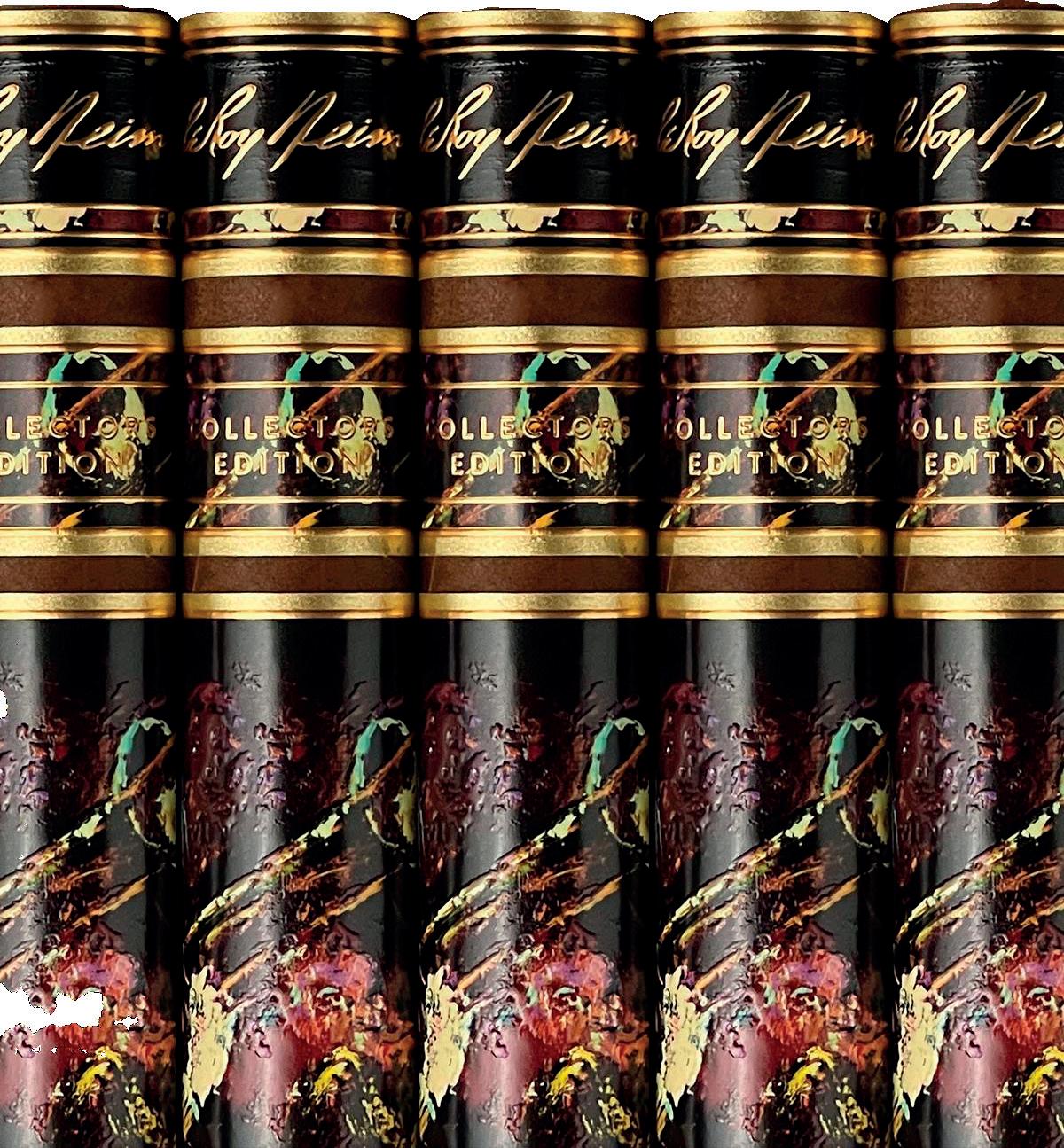
Pampero, Aniversario Edition
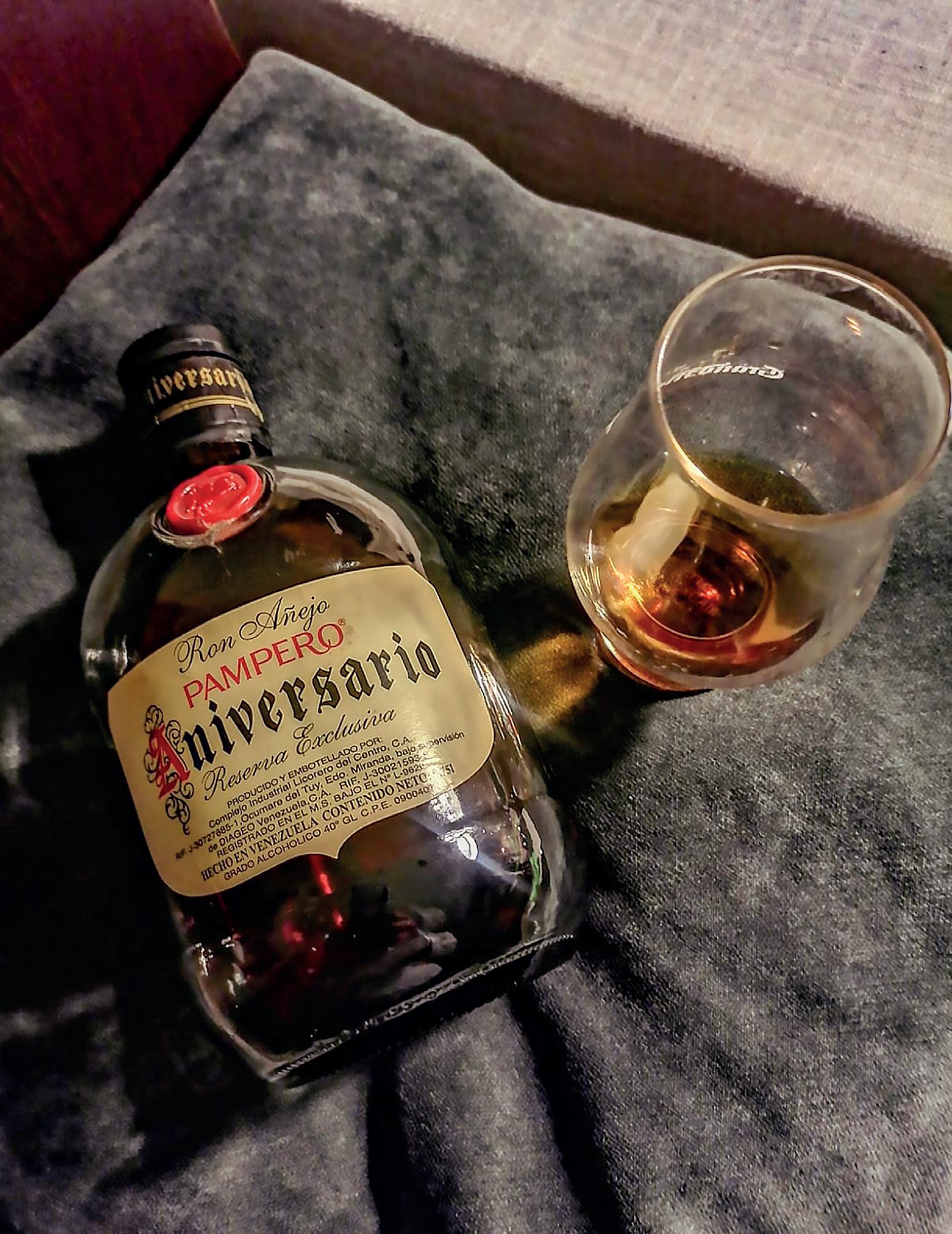
The paths of two men cross, and together they change not only their lives but the identity of the liquor of an entire country...
Gonzalo Romero S. @gorosacigar
In the city of Caracas, Venezuela, Mr. Alejandro Hernández and Mr. Luis Toro created the production of Ron Pampero in 1938, a history that, thanks to their vision, allowed them to give their country not only a product but also an identity.
From its beginnings, this distillate noted for its innovation by undergoing a two-year maturation, which allowed it to be named the first Aged Rum in Venezuela.
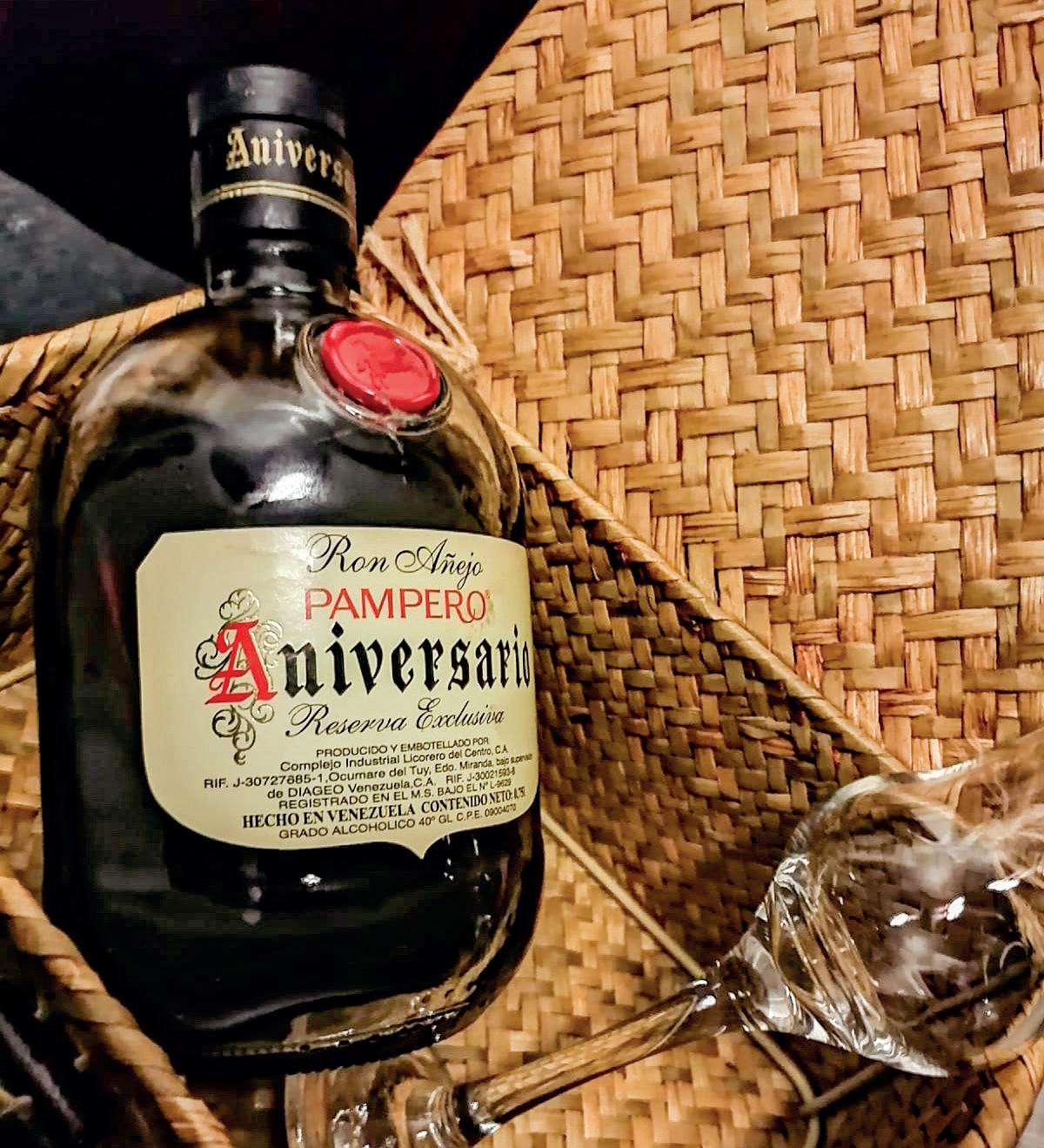
Awarded the Gold and Double Gold Medals at the World Spirits Competition in San Francisco, California, USA.
The master rum maker Luis Gerardo Figueroa Tovar, passionate about the art of production, was the architect of the product that allowed the world to recognize the quality of Ron de Venezuela (Rum of Venezuela); a Designation of Origin (DO) obtained by Pampero and the first such designation granted to a molasses-based rum in the world.
Therefore, it was no surprise that this brand has been repeatedly awarded the Gold and Double Gold Medals at the World Spirits Competition in San Francisco, California, USA.
The magic happens at the La Miel distillery, located in the municipality of Simón Planas, Lara state, where the benefits of nature are utilized by using water from its own high-purity spring, as well as the high-sugar content sugarcane produced by their lands.
Another factor, its climate, allows that once the production process is complete, the maturation cycle is three times more intense than usual due to the high temperatures. Thanks to this, a sevenyear-old rum is equivalent to a 21-year-old European whiskey or cognac.


Stories and memories survive in every distillery, which in this case are celebrated with a special Aniversario Edition that blends their finest rums.
With 40 percent alcohol by volume (ABV), and no age statement, this is a mahogany-colored liquid, appearing reddish when held up to the light. The nose offers notes of vanilla, dried fruits, wood, leather, tobacco, and caramel, and on the palate, it is complex and intense, featuring vanilla, caramel, and a final flavor with personality.
The identity that Ron Pampero has given to Venezuela in the world is worthy of sharing, and there is nothing better than honoring it alongside loved ones... Thank you, @ renangm2 for sharing. Enjoy!, and remember that gratitude is an expression that increases happiness and attracts success.
With 40 percent alcohol by volume (ABV), and no age statement, this is a mahogany-colored liquid, appearing reddish when held up to the light.
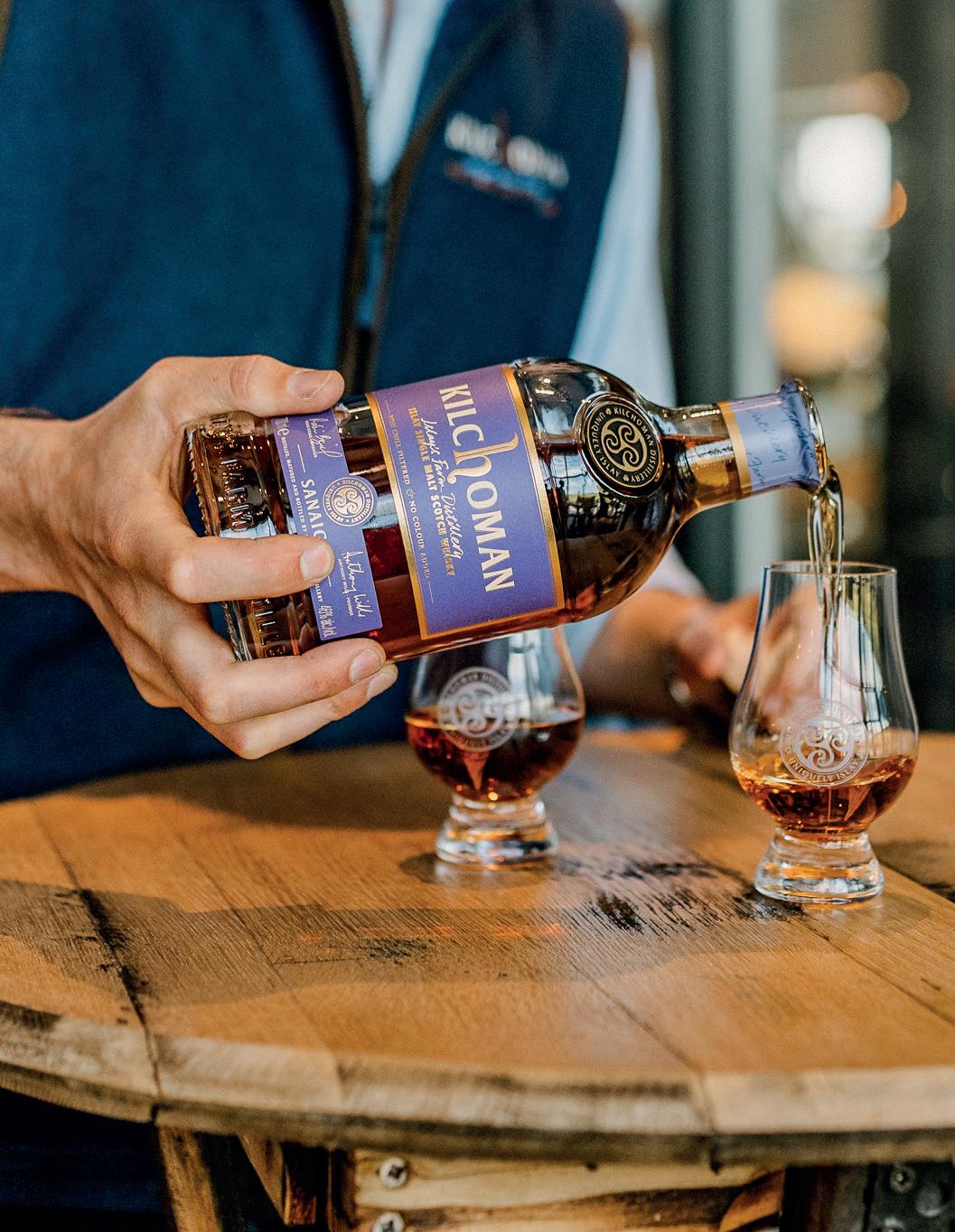

Michel Texier
CLASSIFICATION: Islay Single Malt.
COMPANY: Kilchoman Distillery Co. Ltd.
DISTILLERY: Kilchoman Islay Farm Distillery.
ABV: 46% (92 proof).
AGE: NAS (No Age Statement).
MASHBILL: 100% Malted Barley.
COLOR: Bright golden, translucent, with a tendency toward light yellow hues.
Kilchoman Machir Bay, named after one of Islay’s most famous beaches, is one of the brand’s most intense expressions, registering 50 PPM (Phenol Parts Per Million). It is distinguished from Sanaig –the variety reviewed in the previous issue of Humo Latino– by being aged 85 percent in ex-bourbon barrels and 15 percent in ex-Oloroso sherry casks, which imparts nearly all of its distinctive character.
NOSE: Peat, dark chocolate, and a subtle citrus presence wrapped in notes of pineapple and dried fruit offer the majority of the olfactory experience in this version of Kilchoman. The notes of iodine and toasted malt make up the unmistakable personality of this Single Malt Whisky’s aromatic profile.
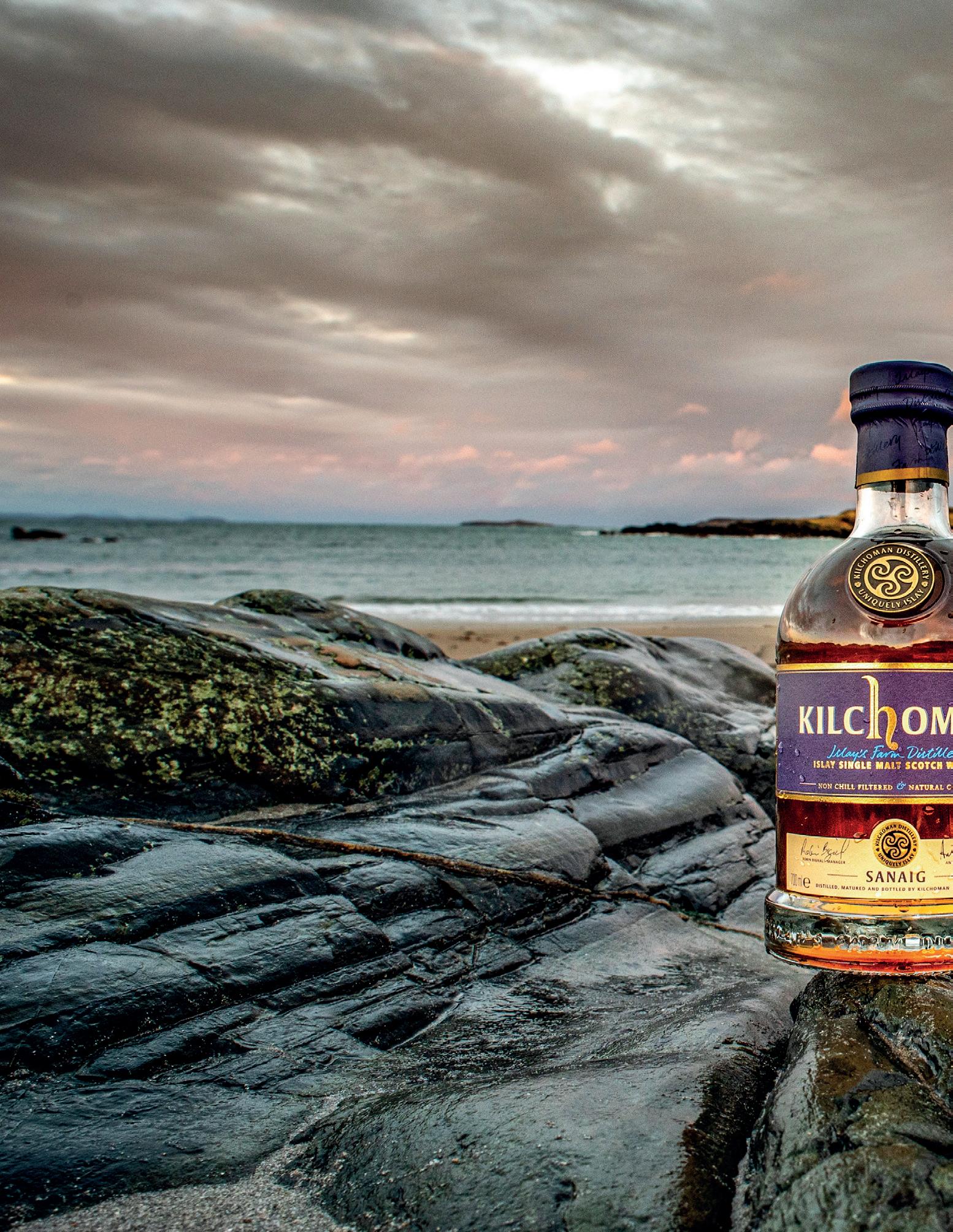
PALATE: It possesses an intense sweetness that integrates very well with the smokiness derived from the peat used in the malt drying process. Citrus notes combine very well with the presence of vanilla and toffee, and despite its phenolic intensity, the sweetness and smoothness on the palate are surprising.
FINISH: Its finish is long and intense, allowing one to enjoy the subtle combination of vanilla, smoky caramel, and the presence of fruit. Peat and iodine dominate the aftertaste without being entirely invasive, ensuring the main note never loses its sweet character.

Machir Bay is located on the west coast of the island and is characterized by the multiple nautical accidents recorded on its beaches, which contrasts with its beauty. The intensity of this maritime history is something that the distillery has sought to preserve in this product, bottled with whiskies that –it is presumed– have been aged for up to five years.
COMMENTS: Founded in 2005, the distillery launched its first NAS expressions in 2009, and in 2012, it brought this label to market. Like the rest of its expressions, it does not use the chill filtration method or add coloring.
